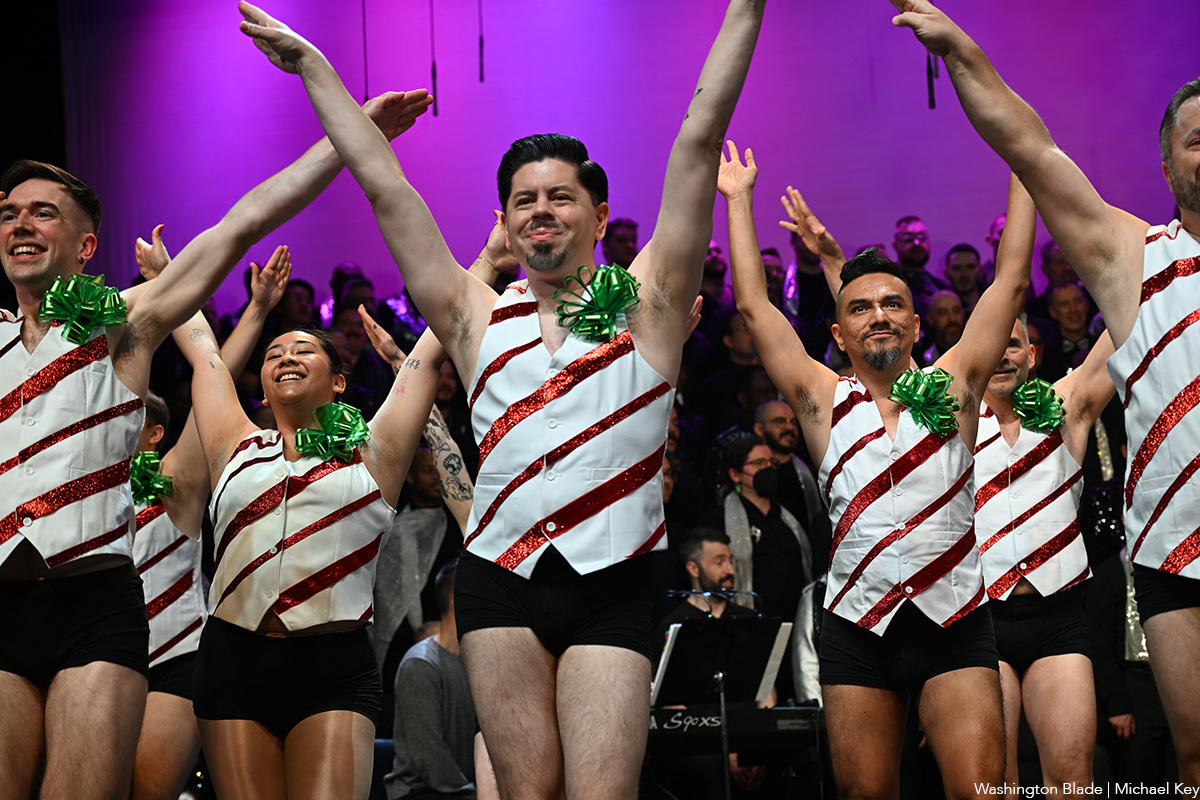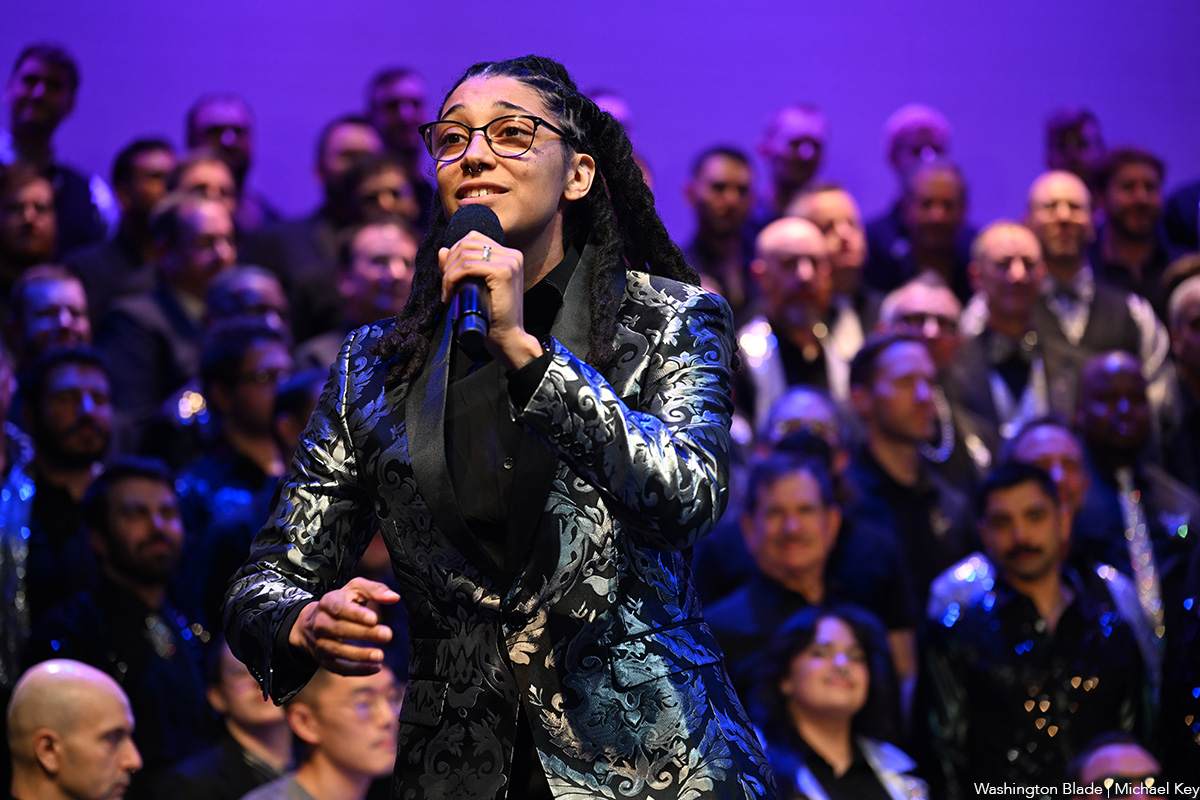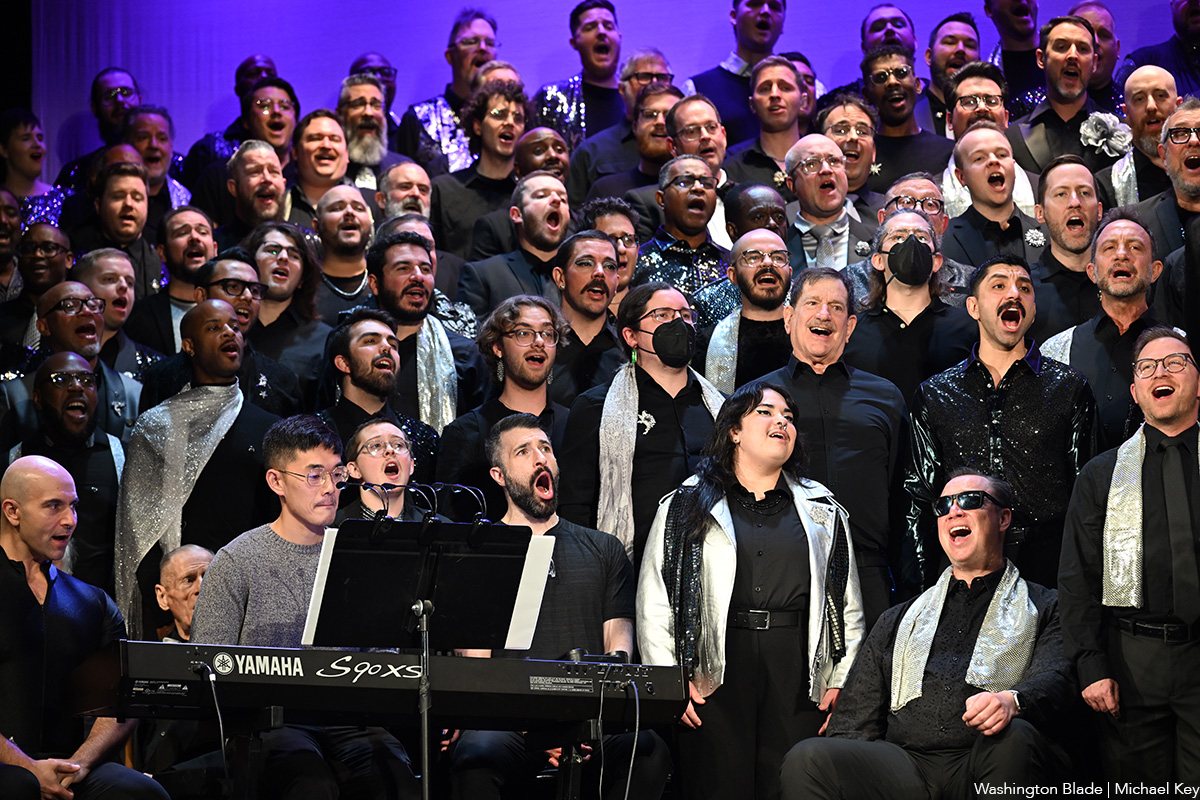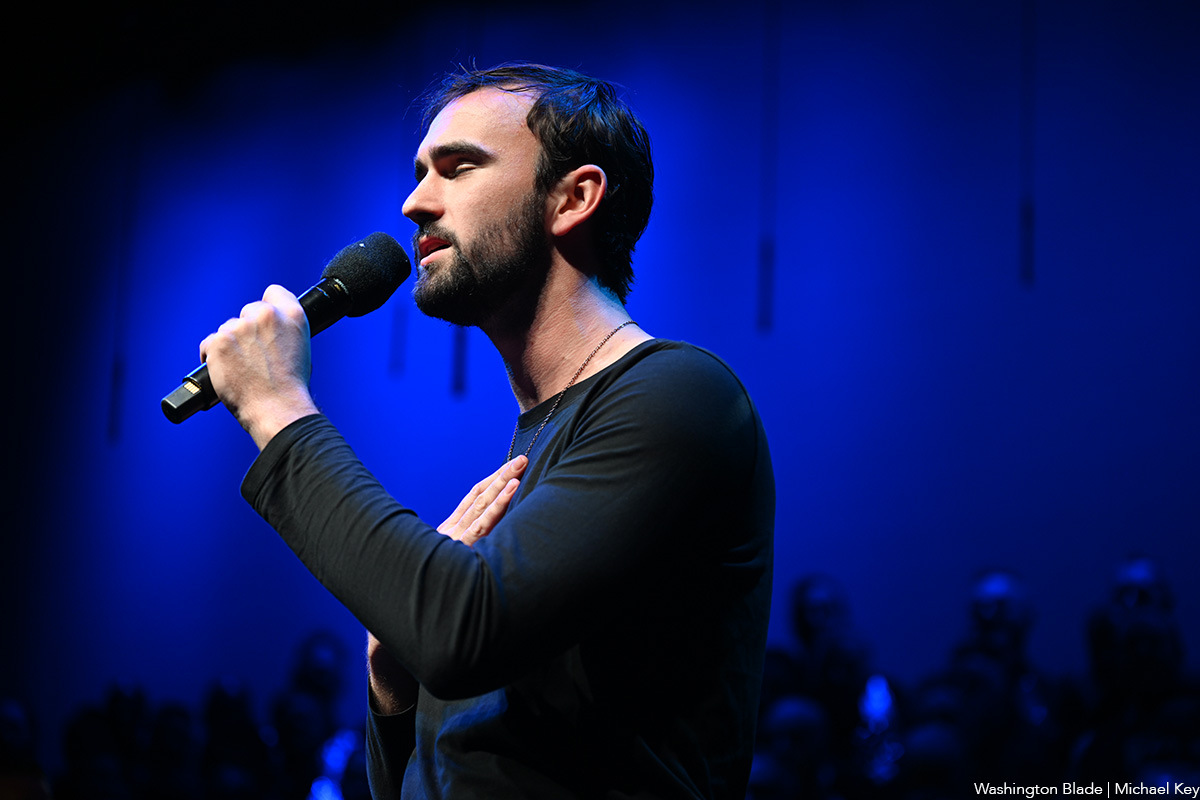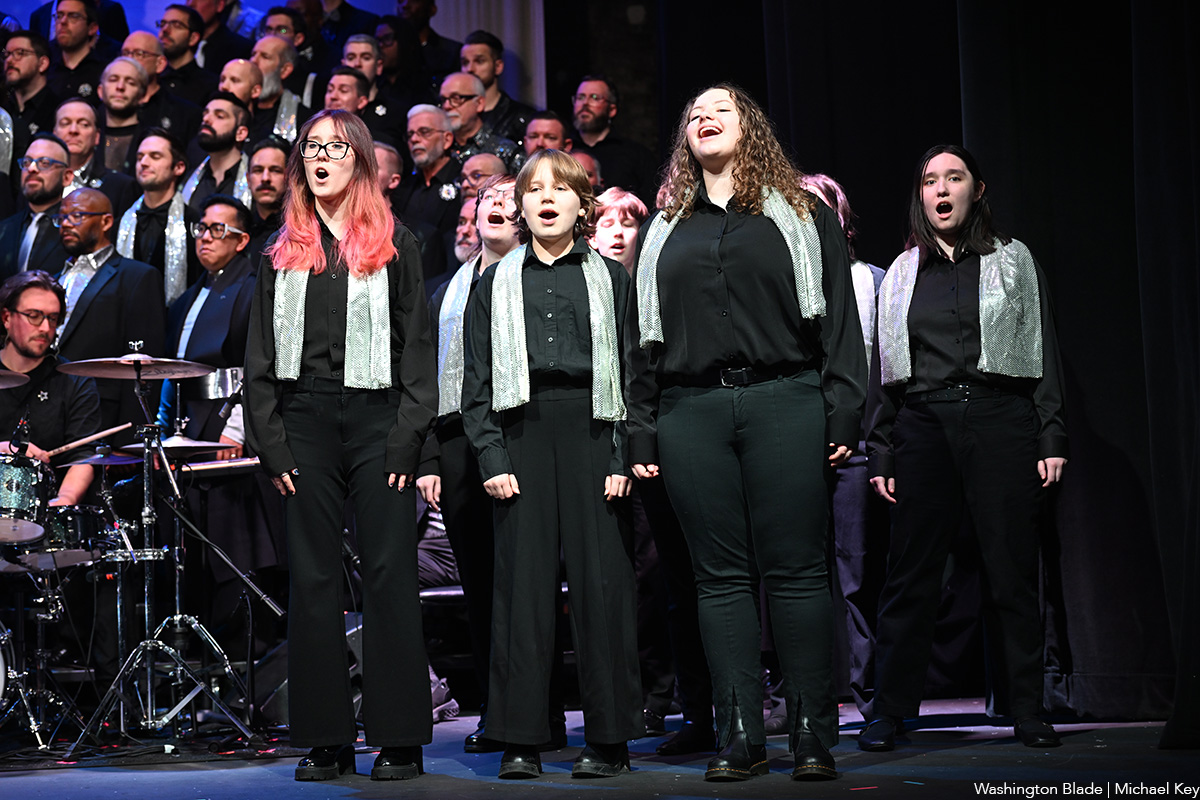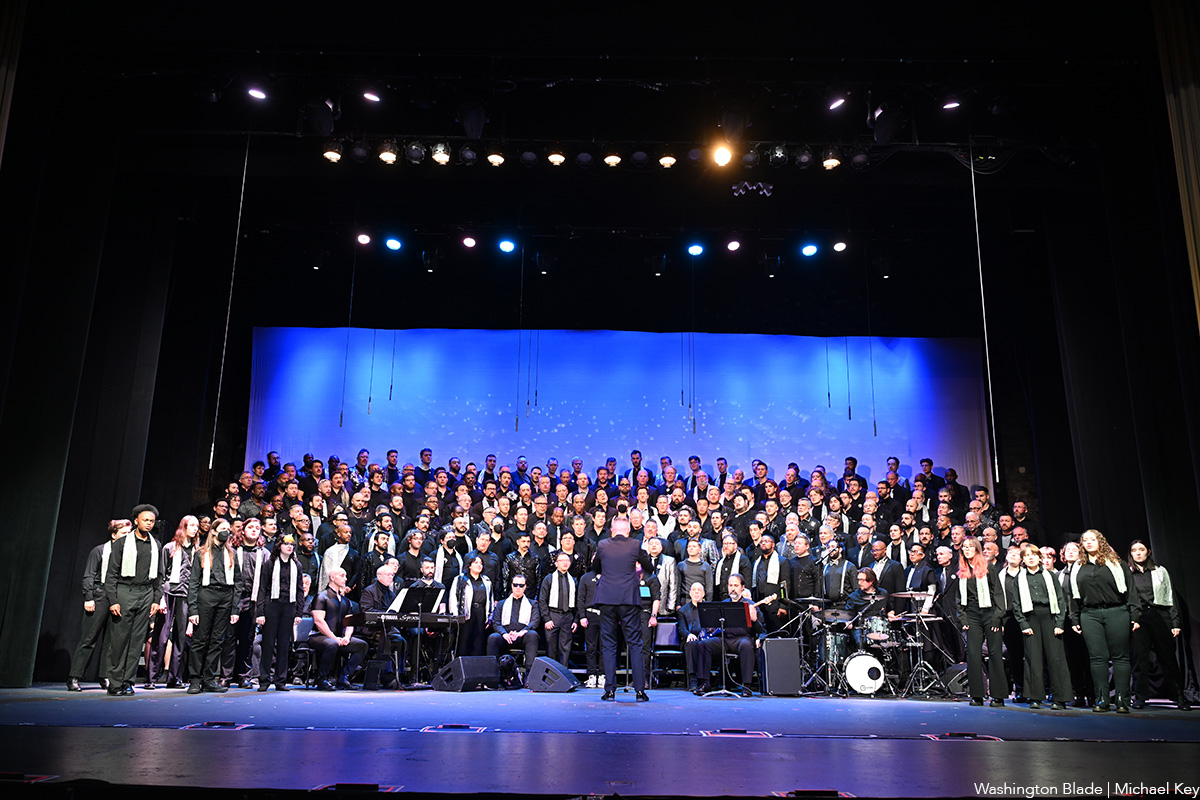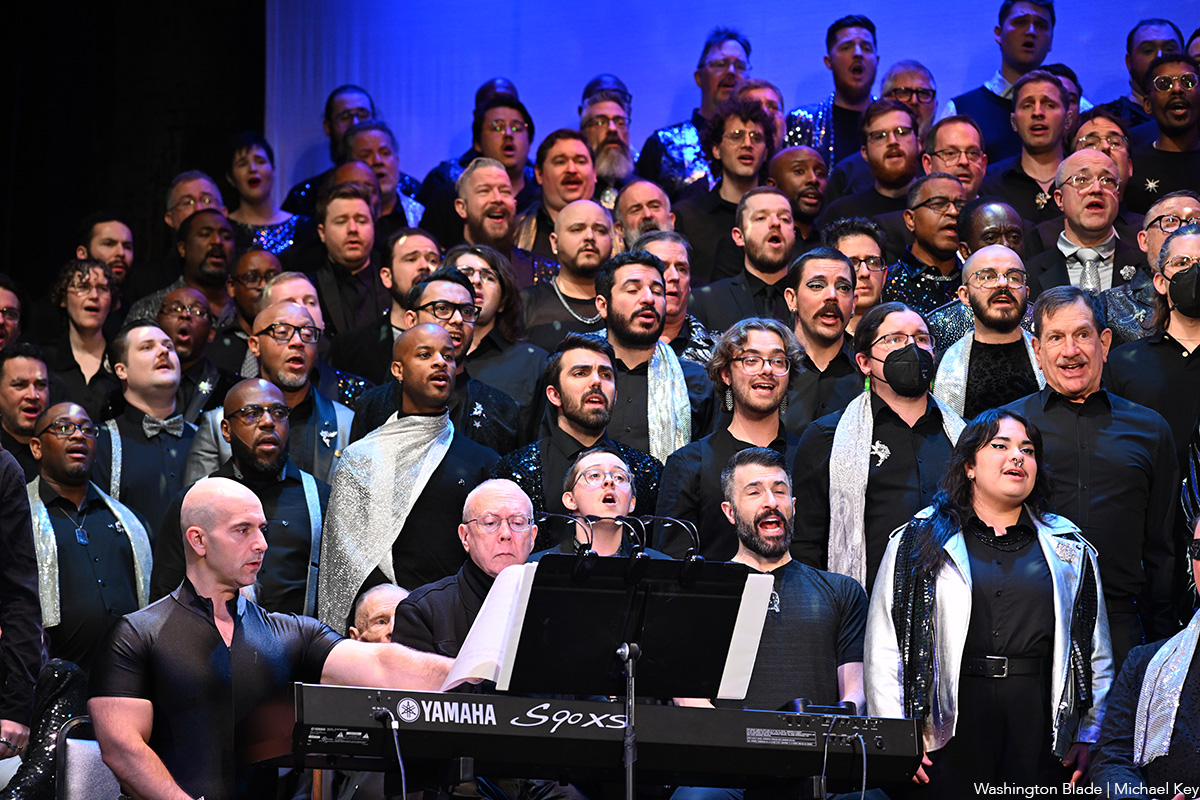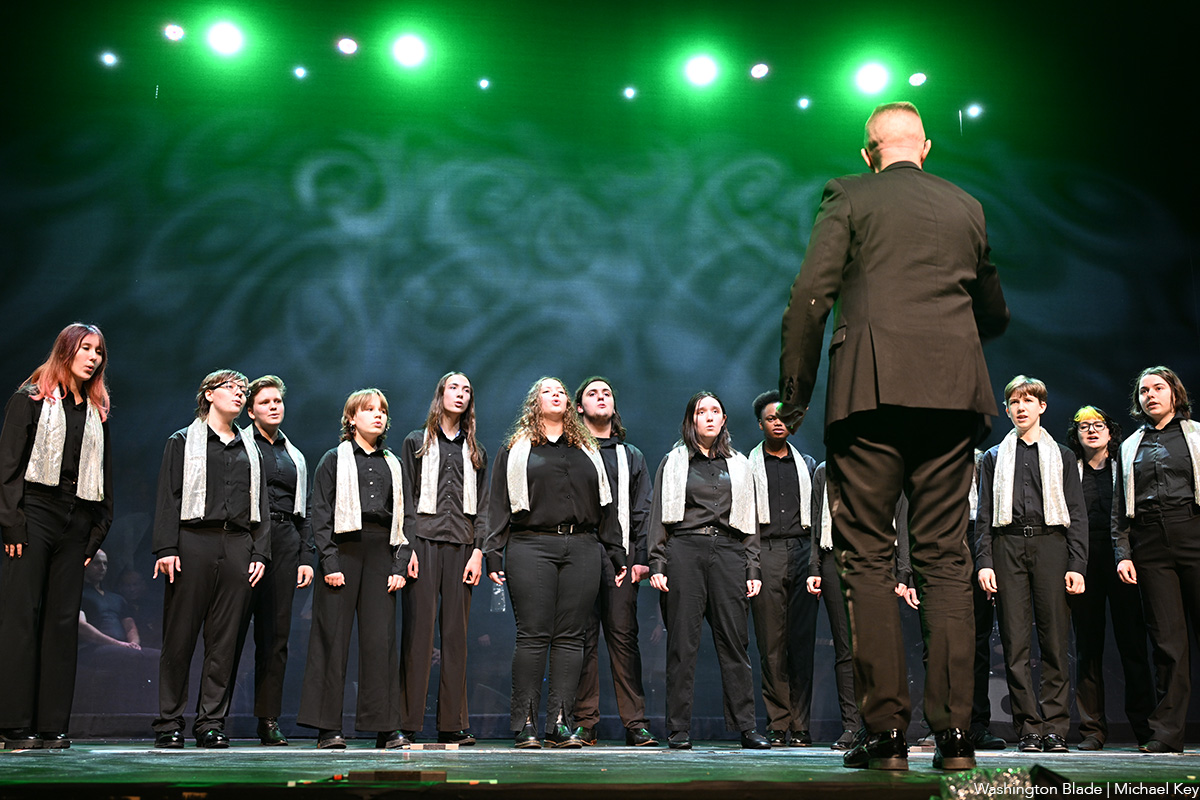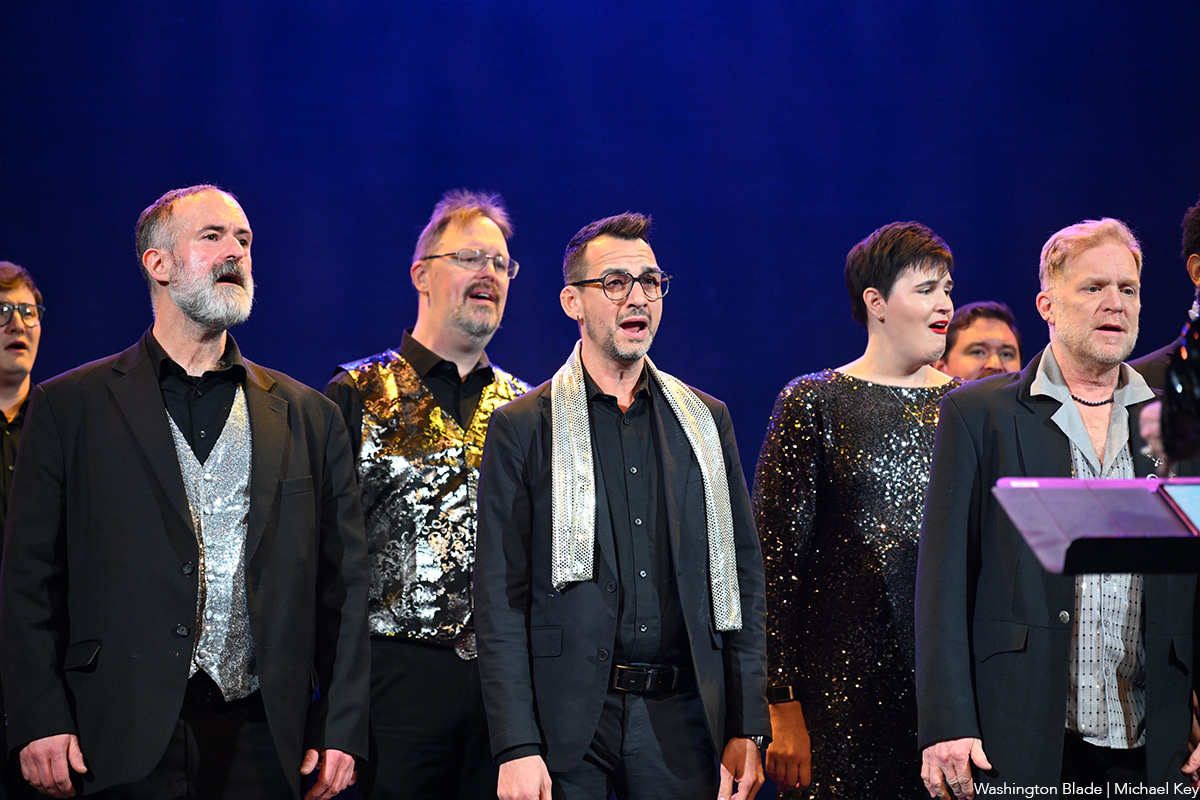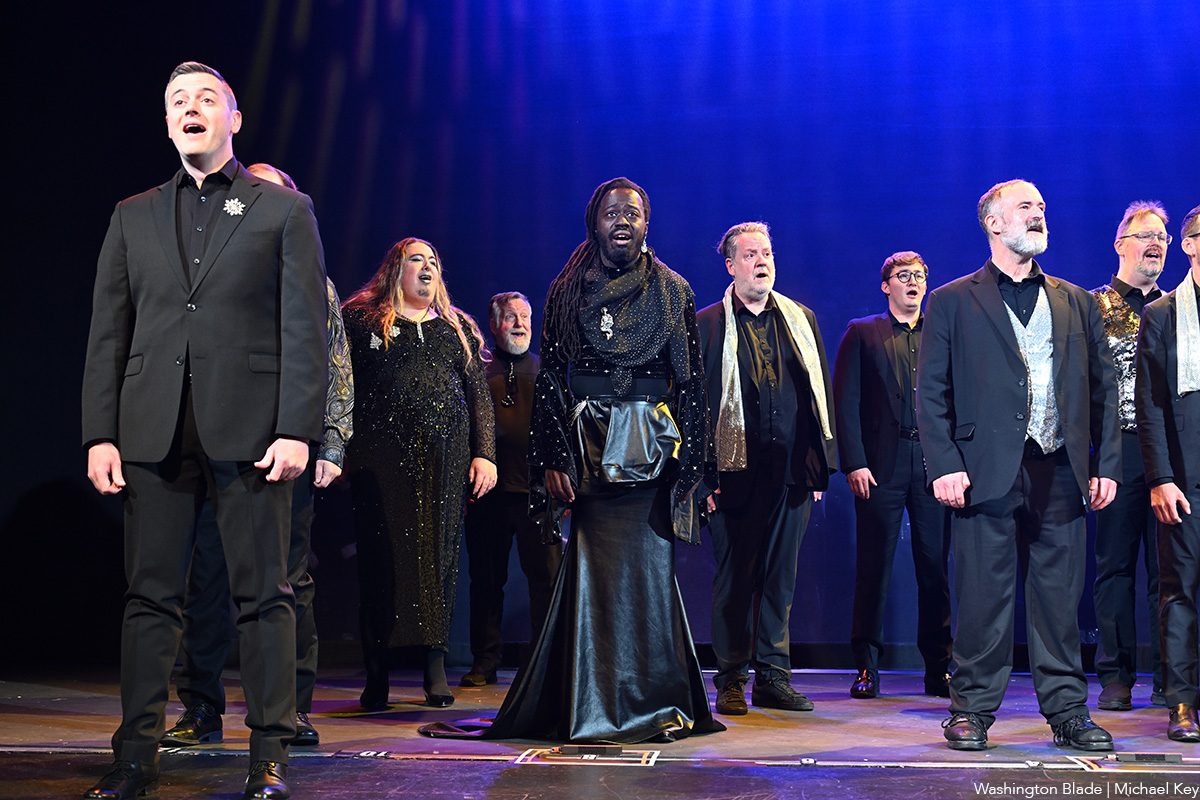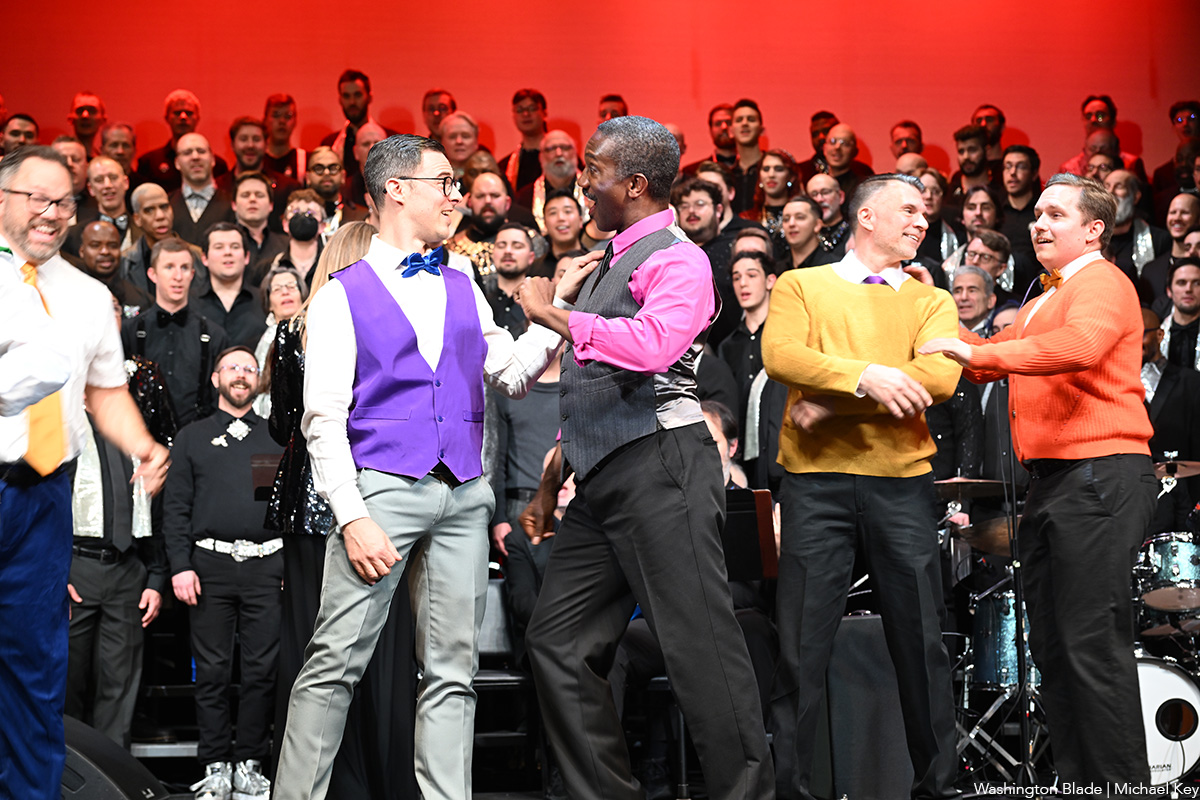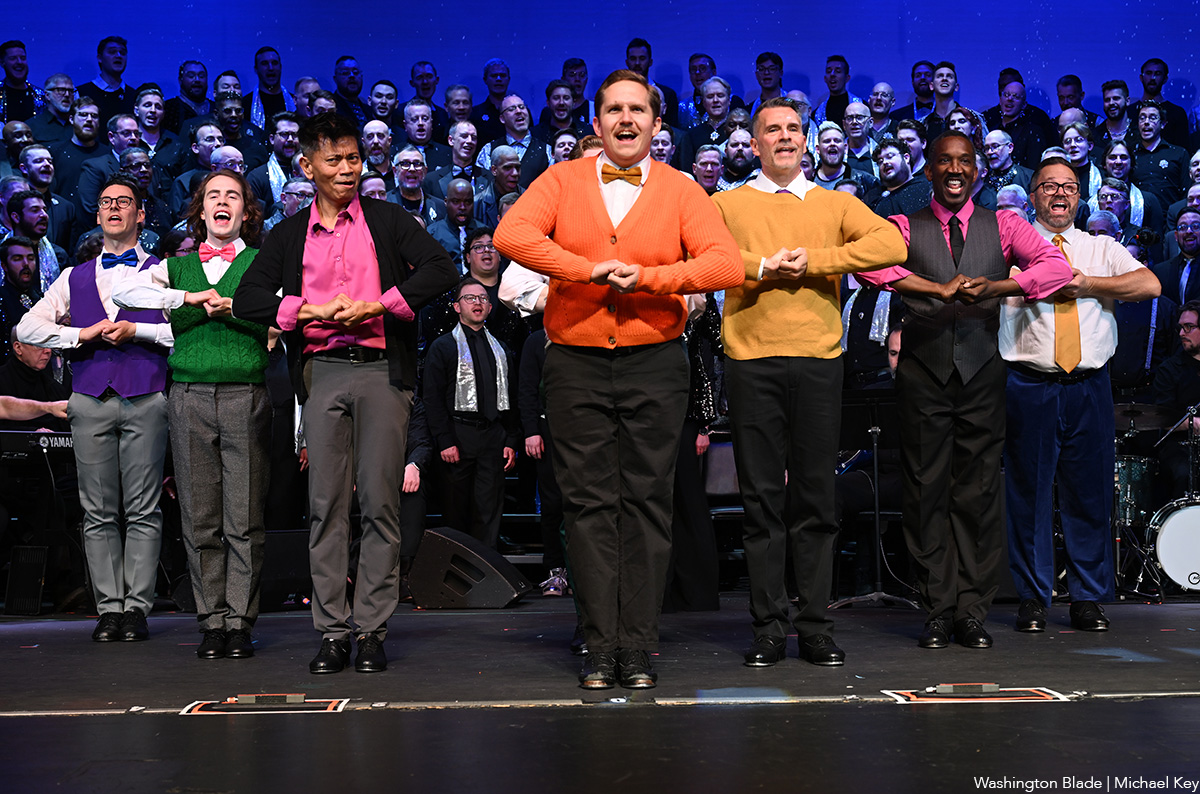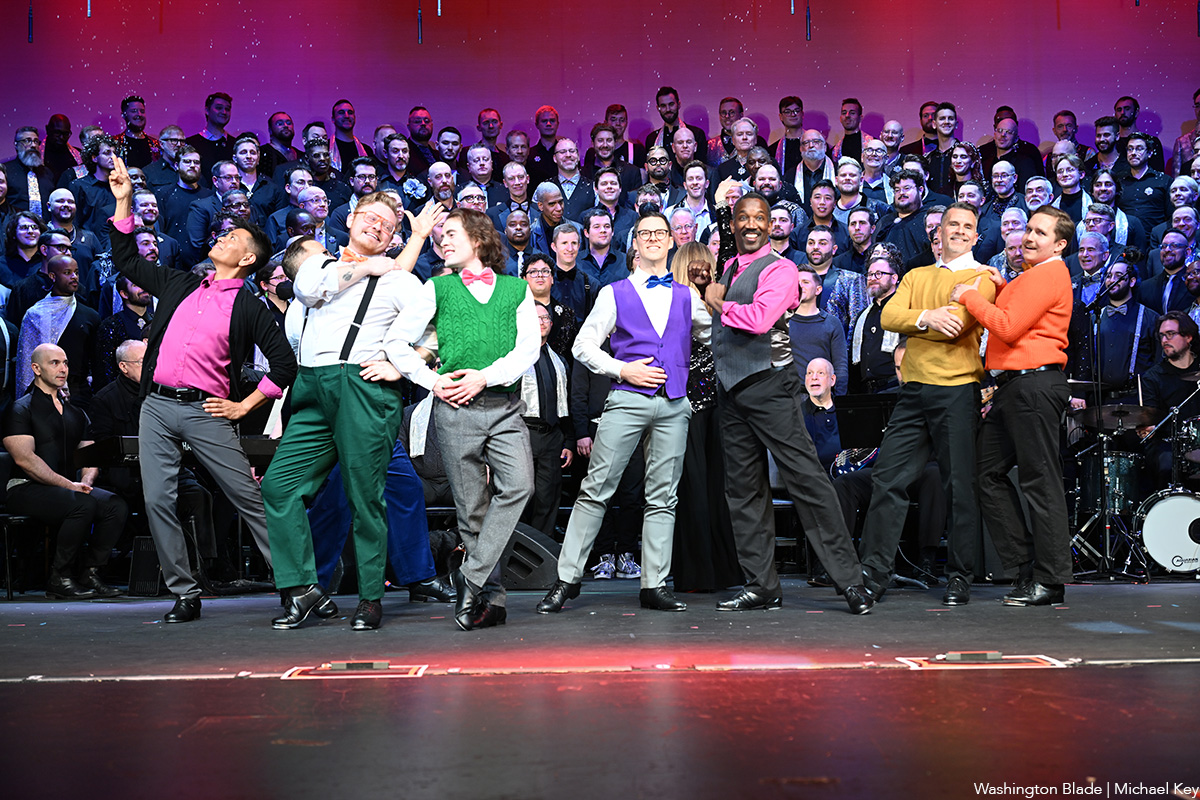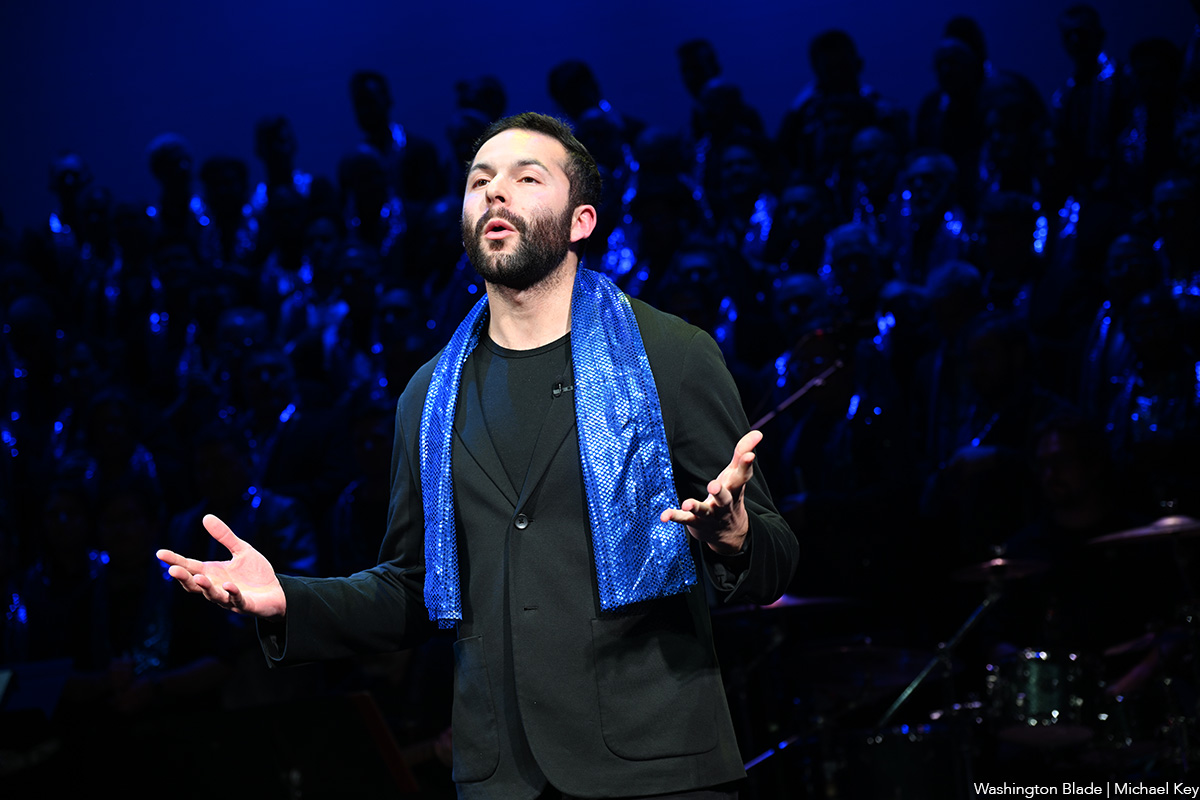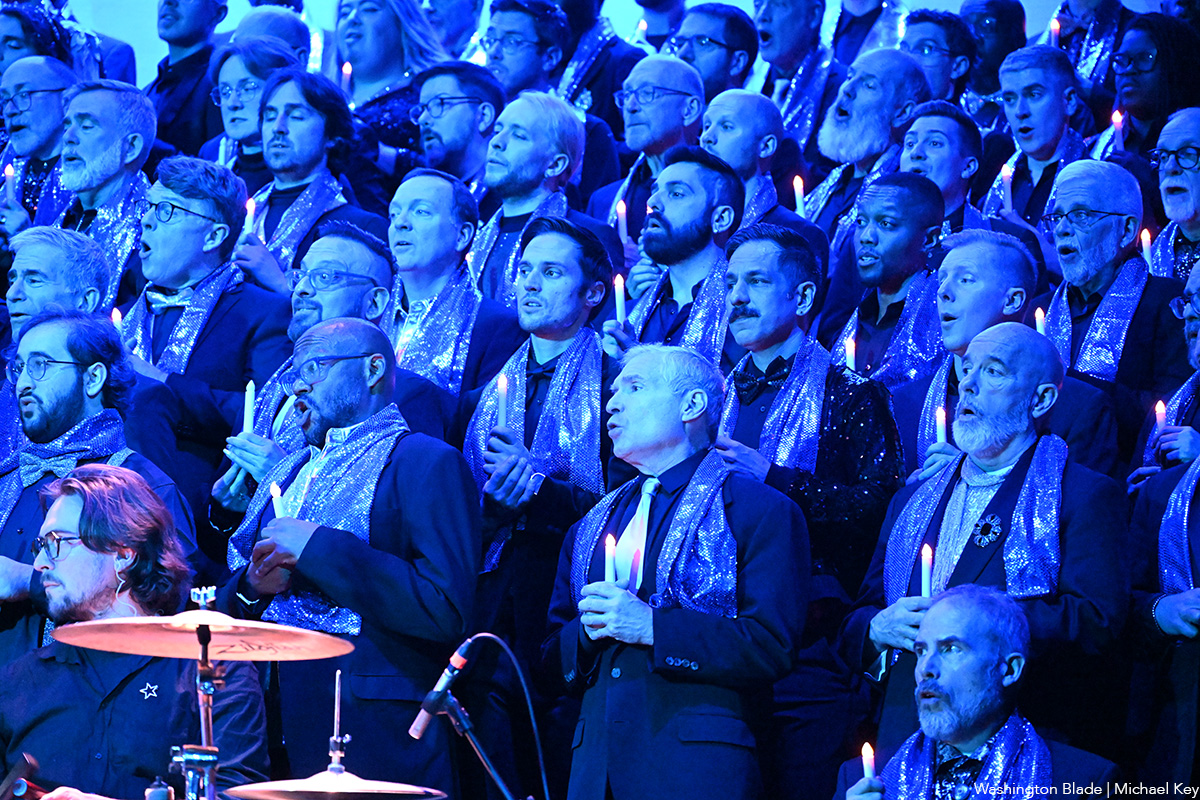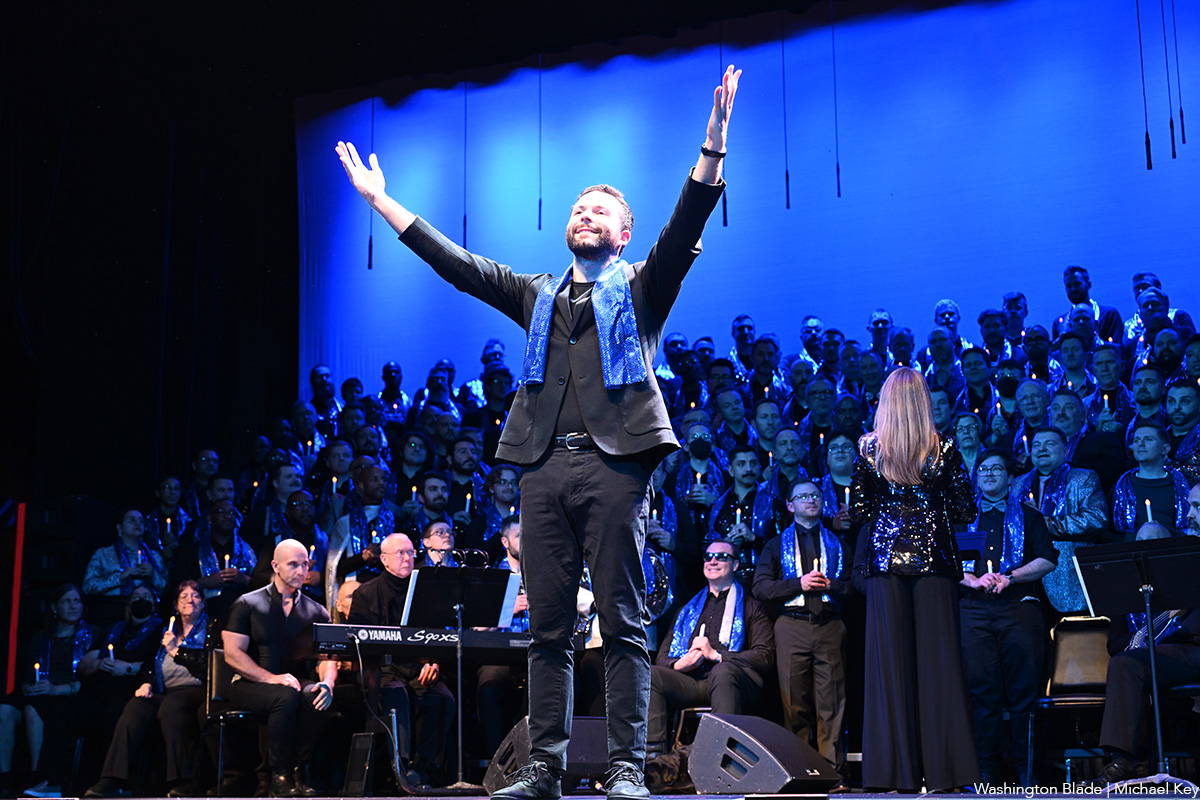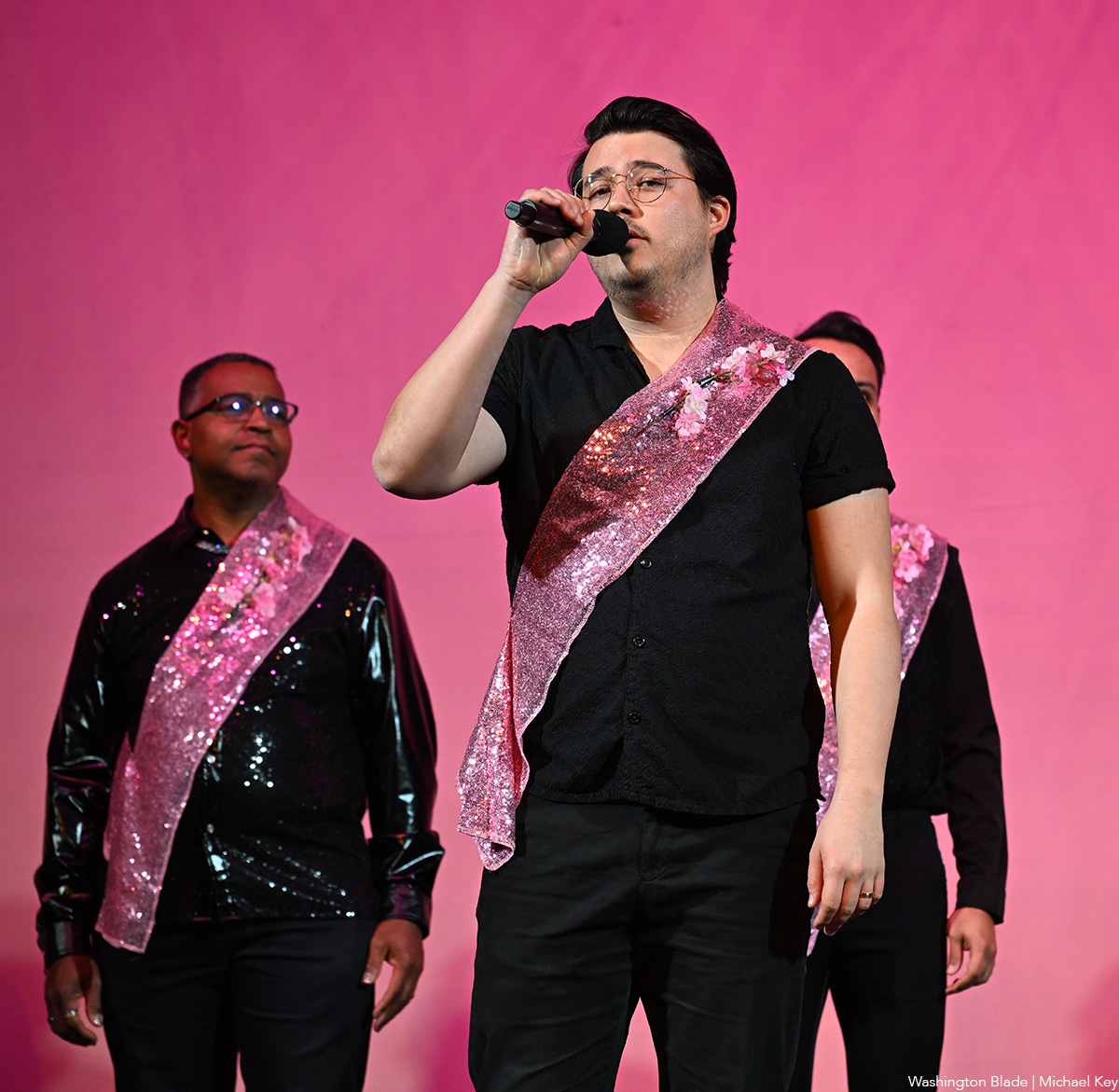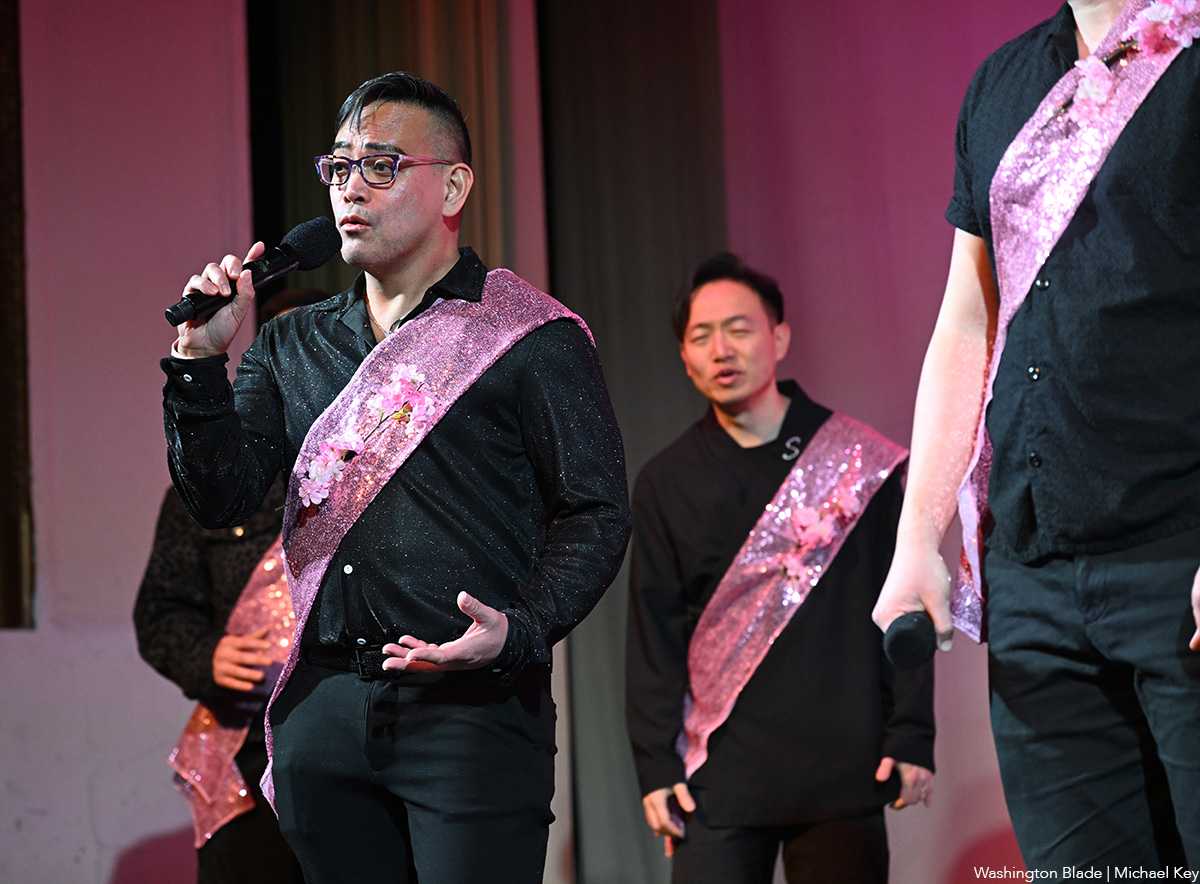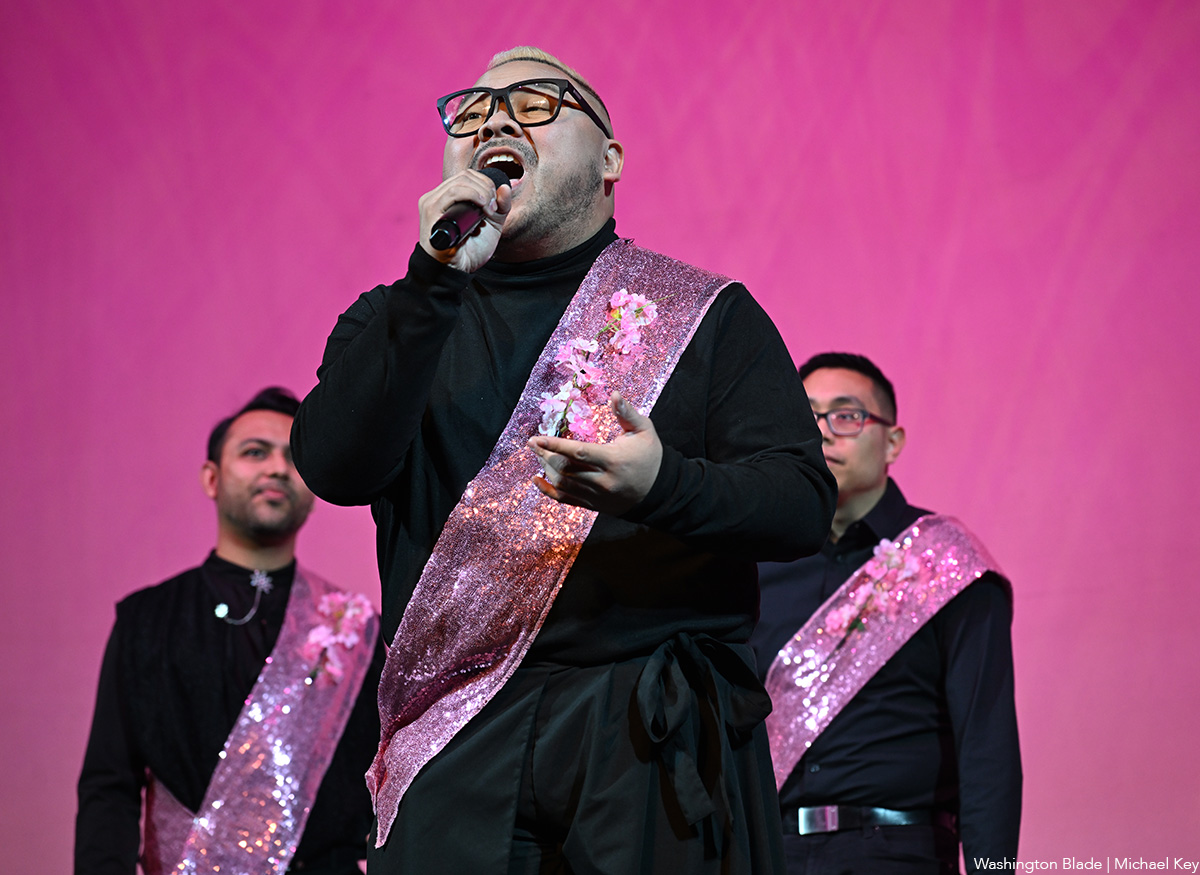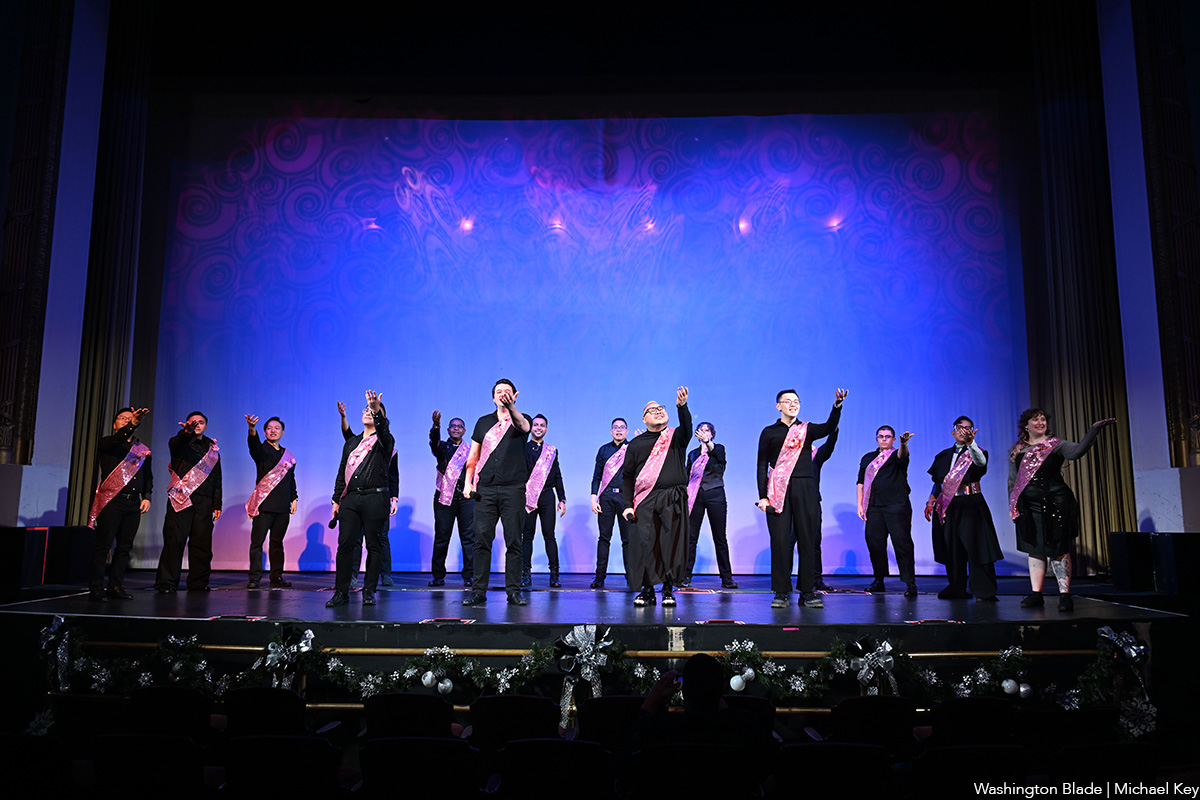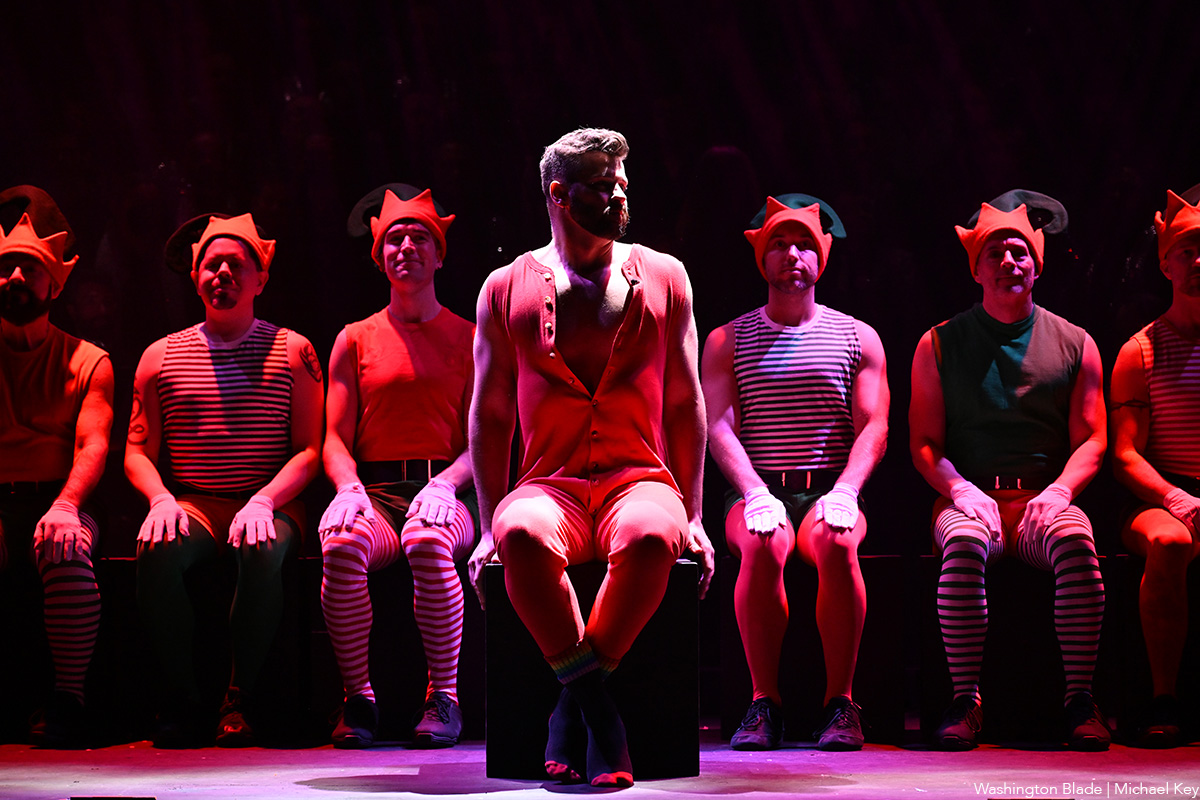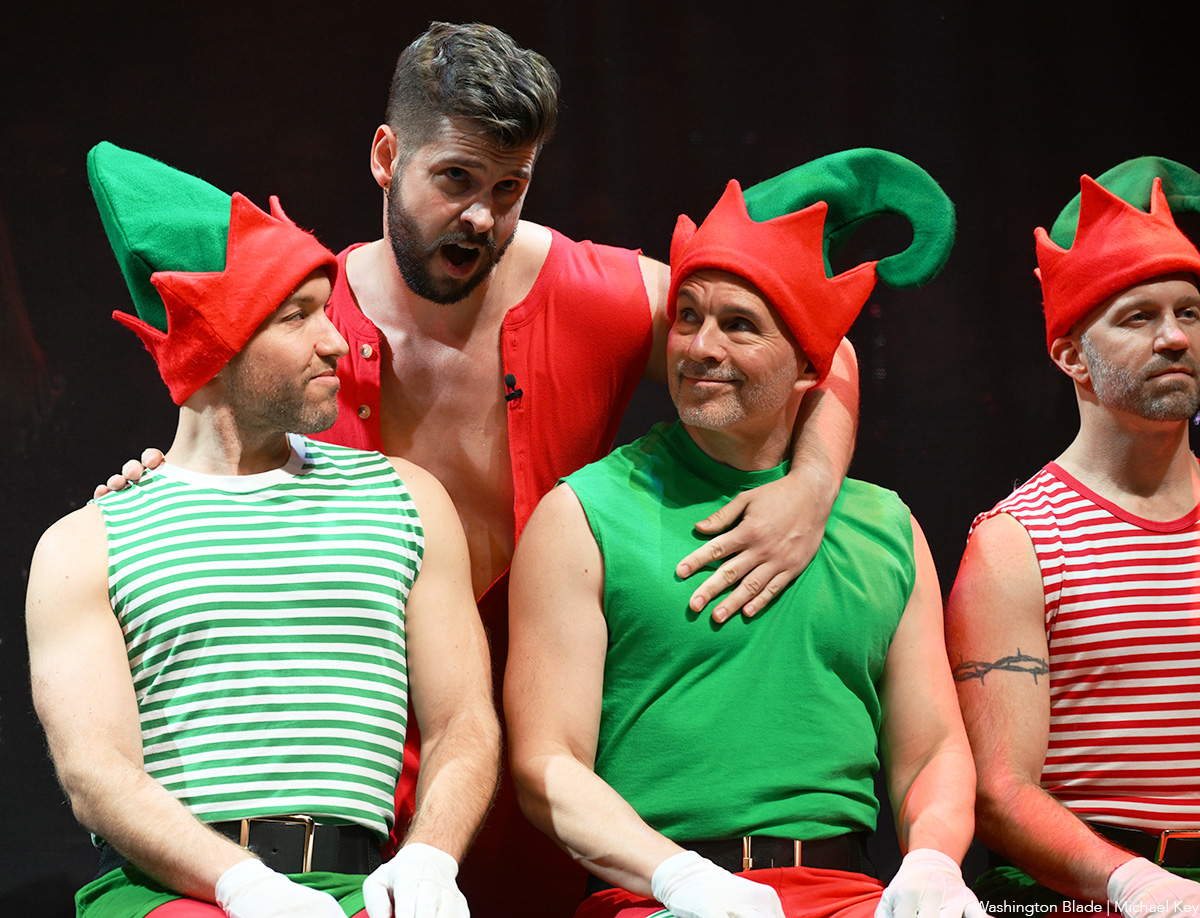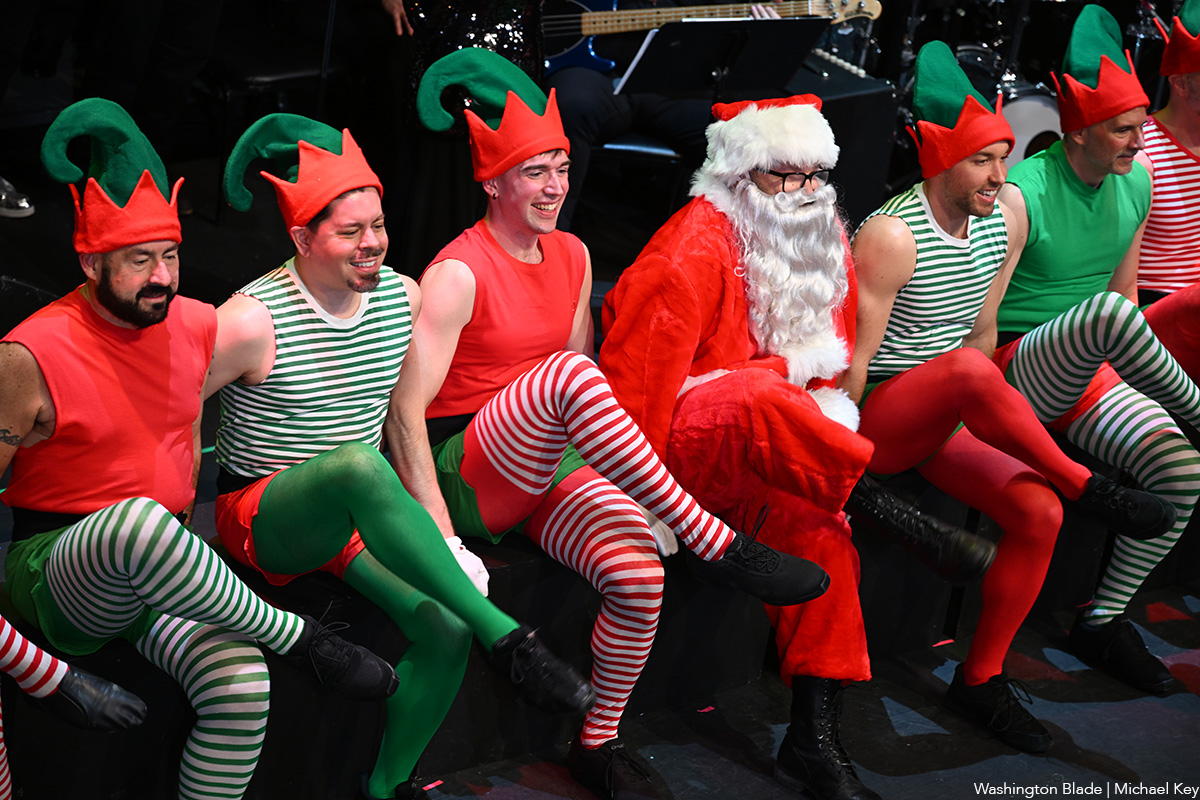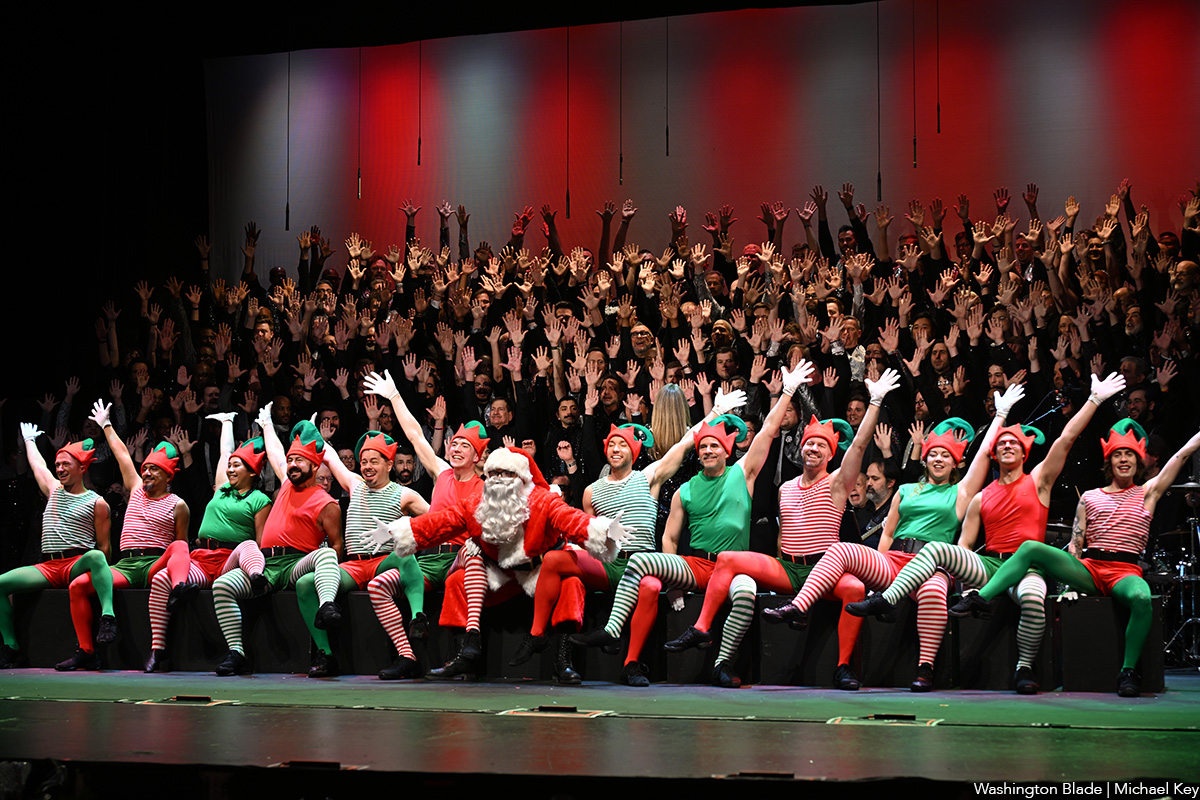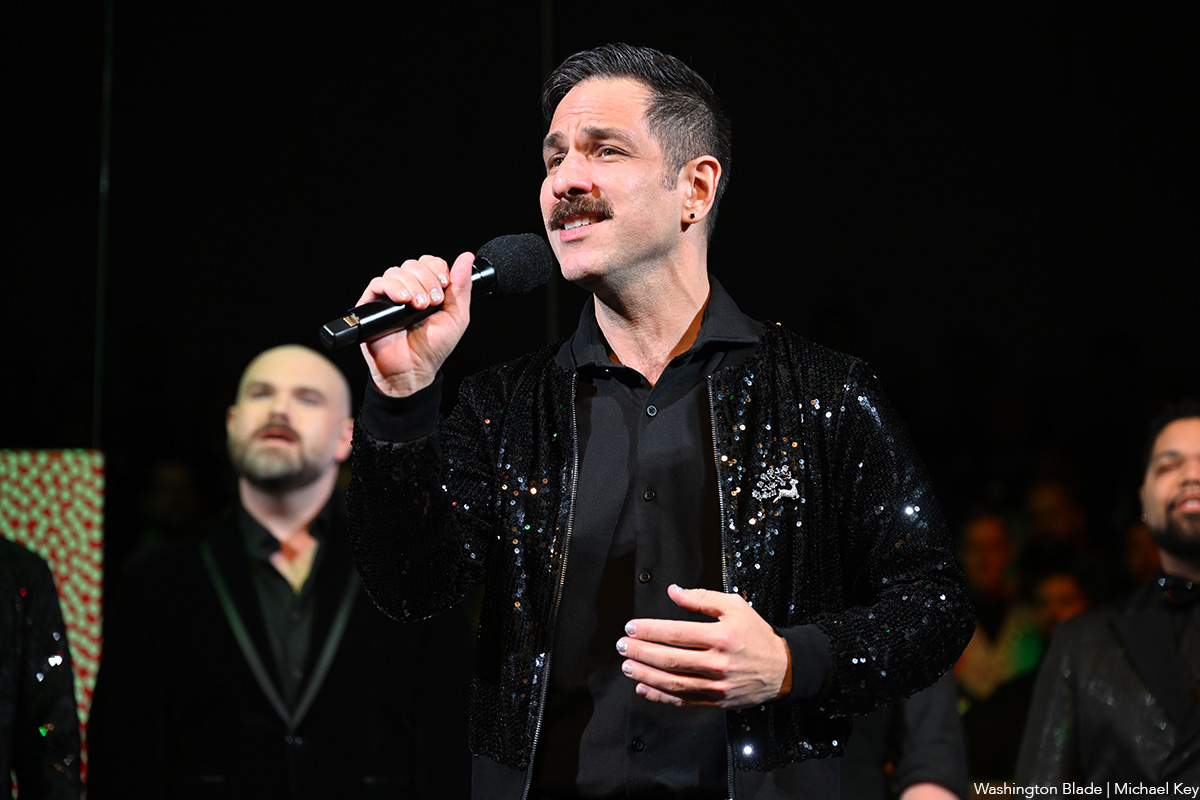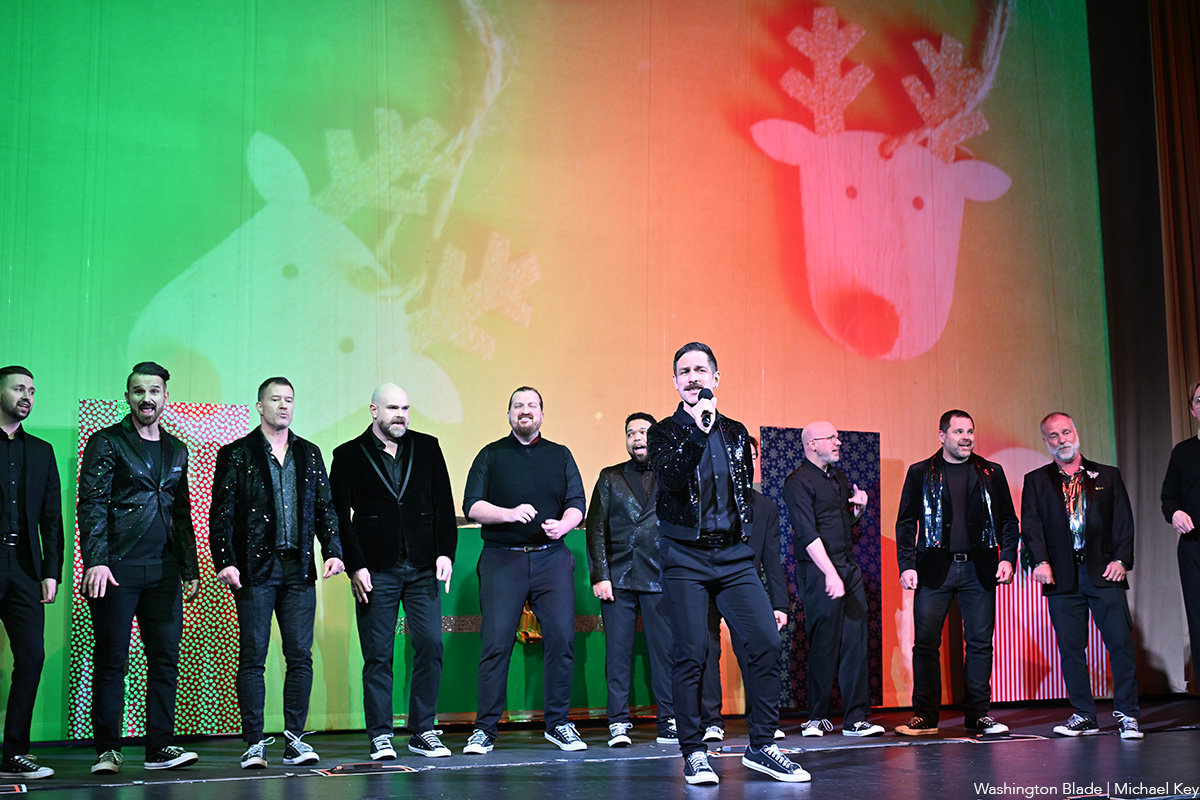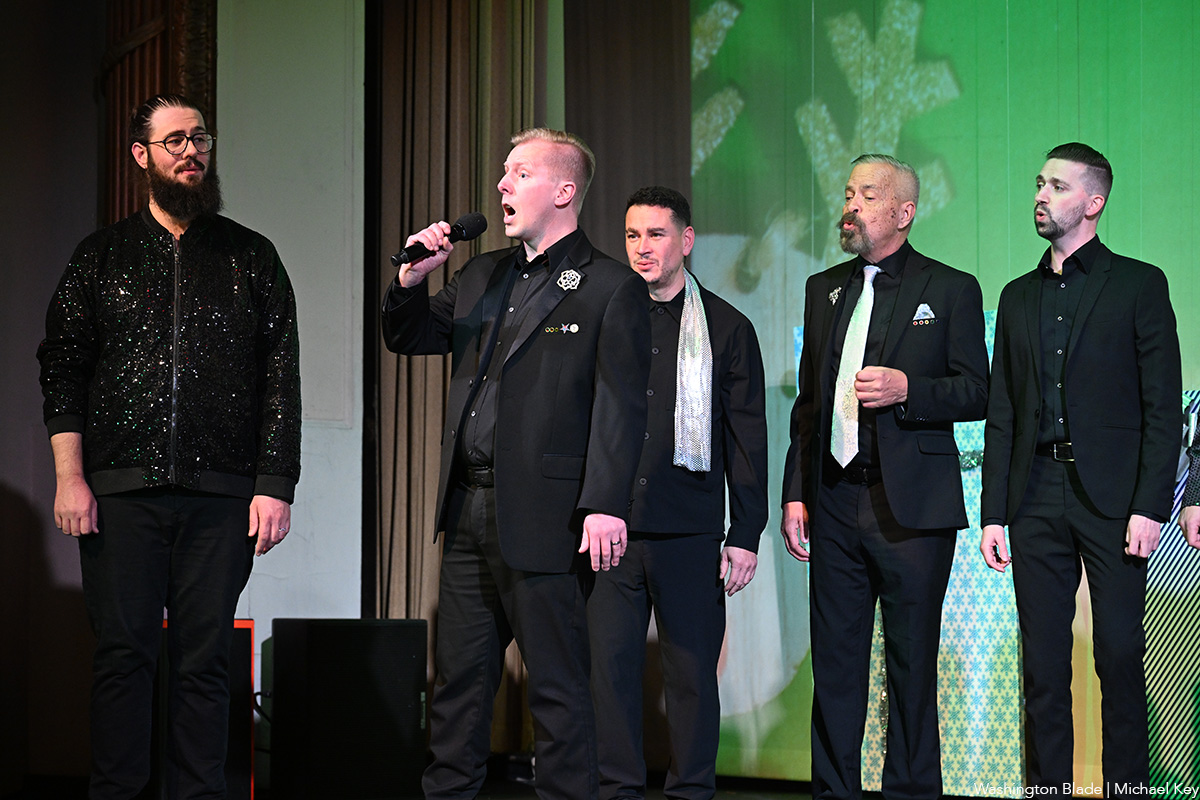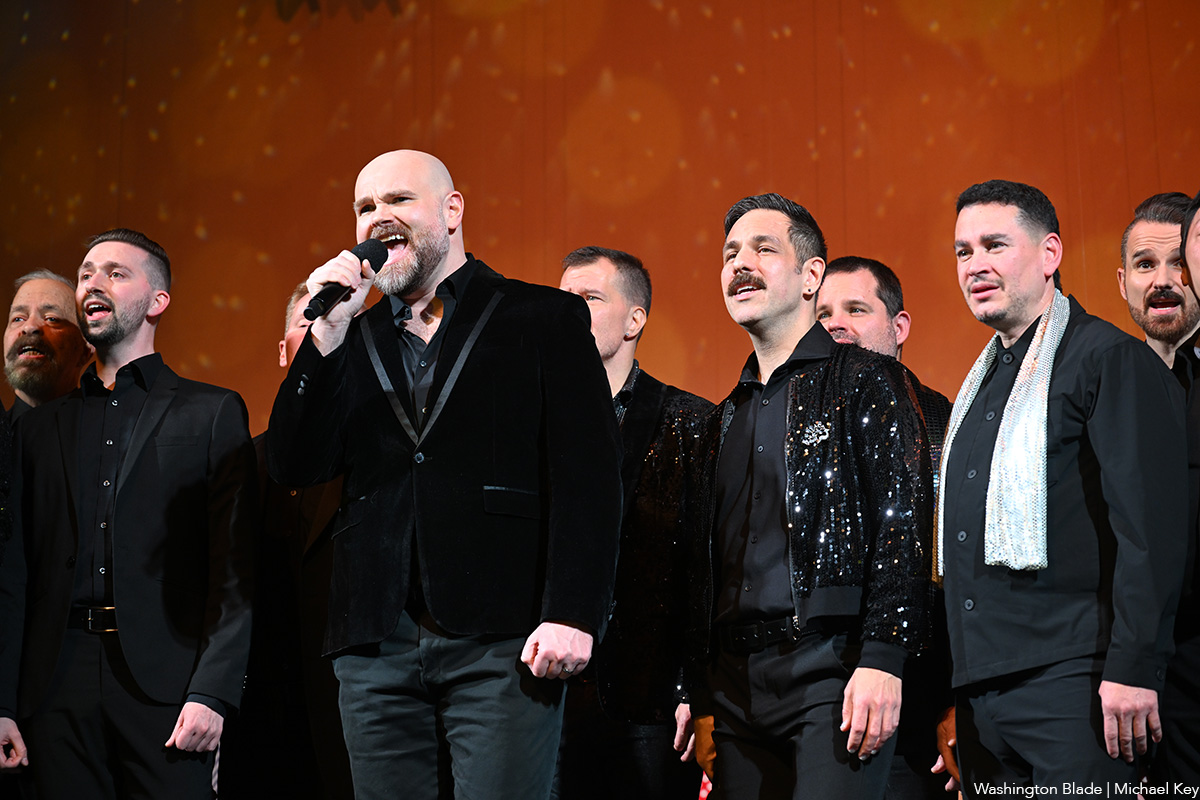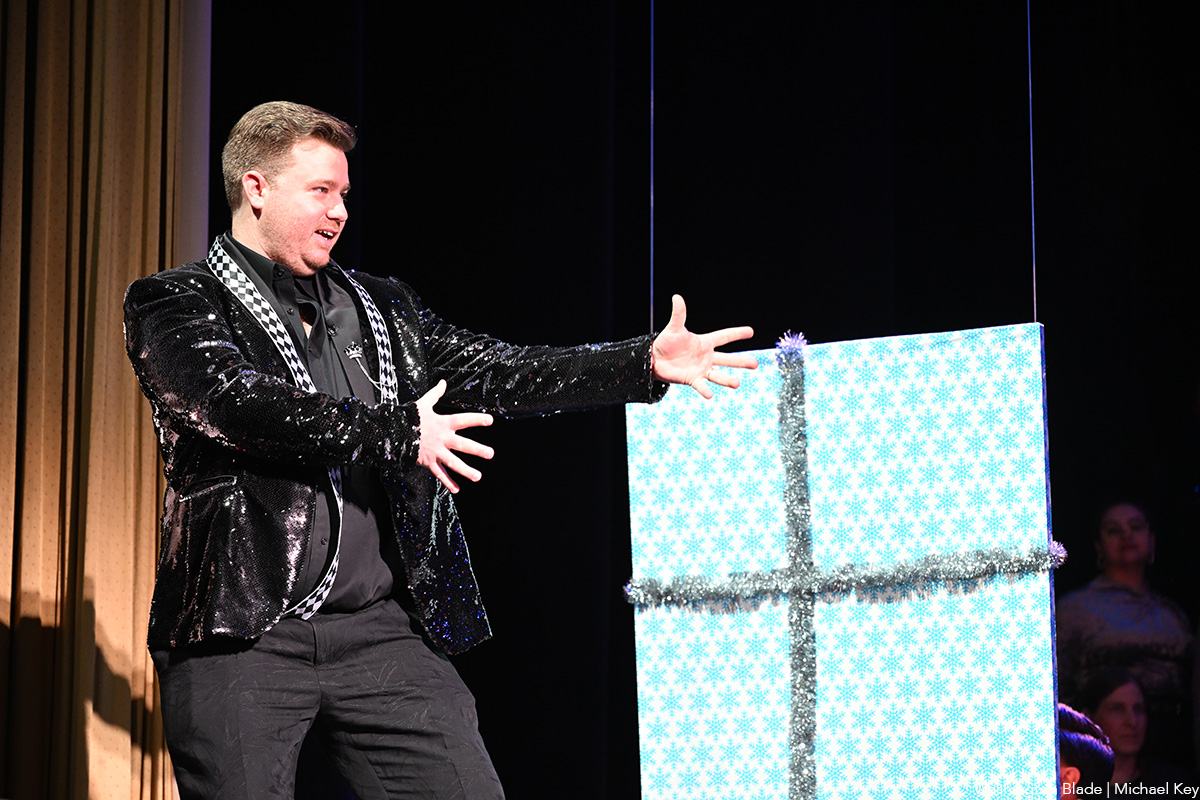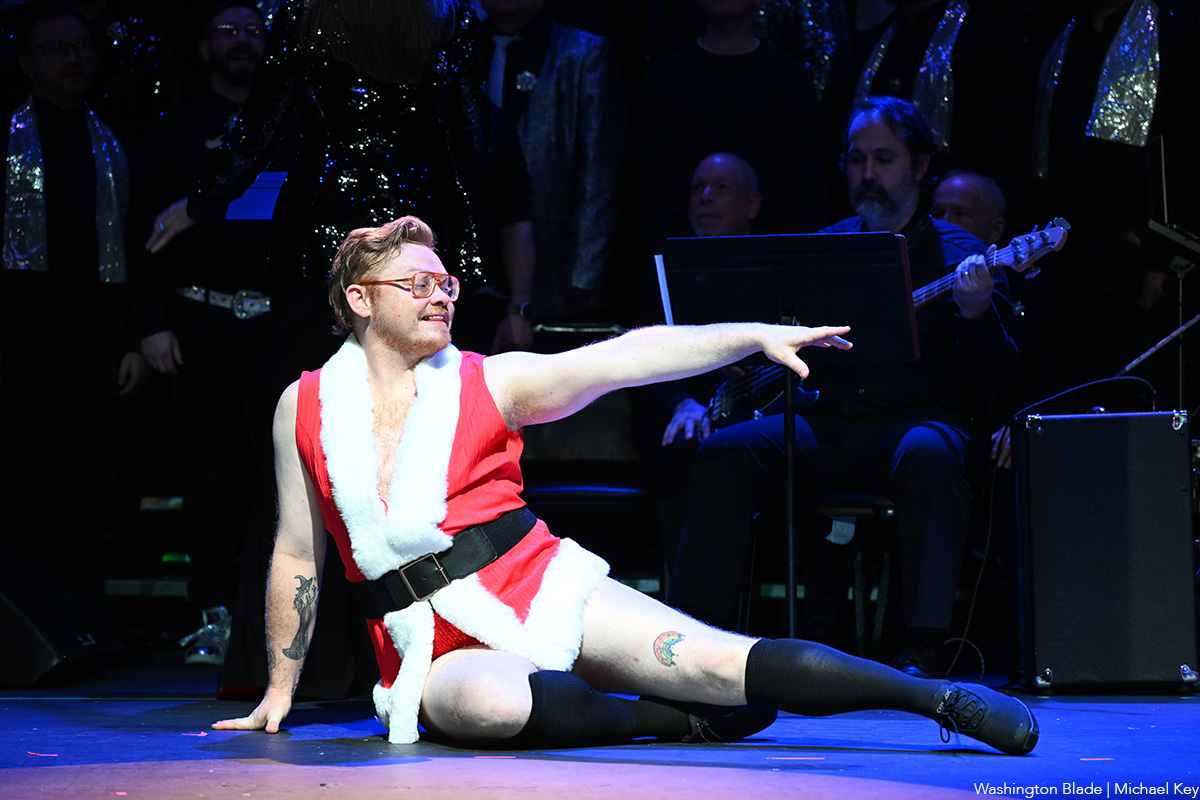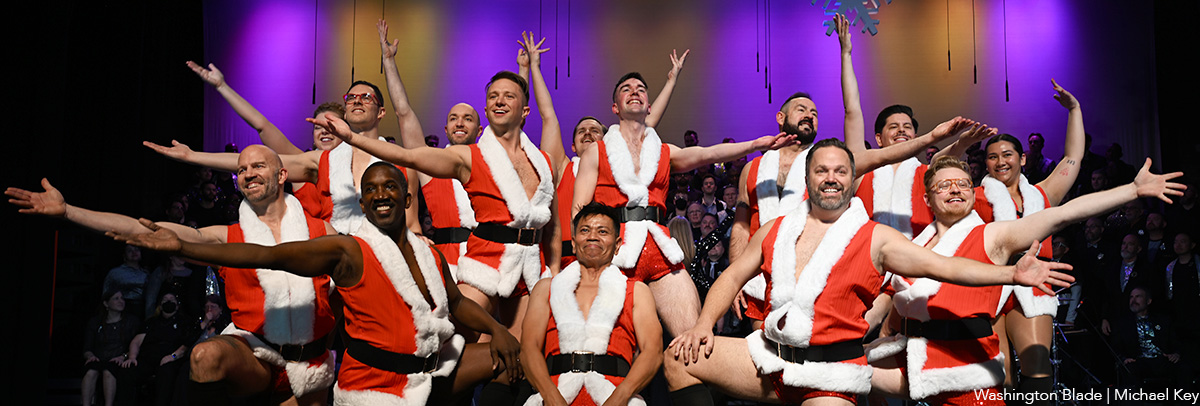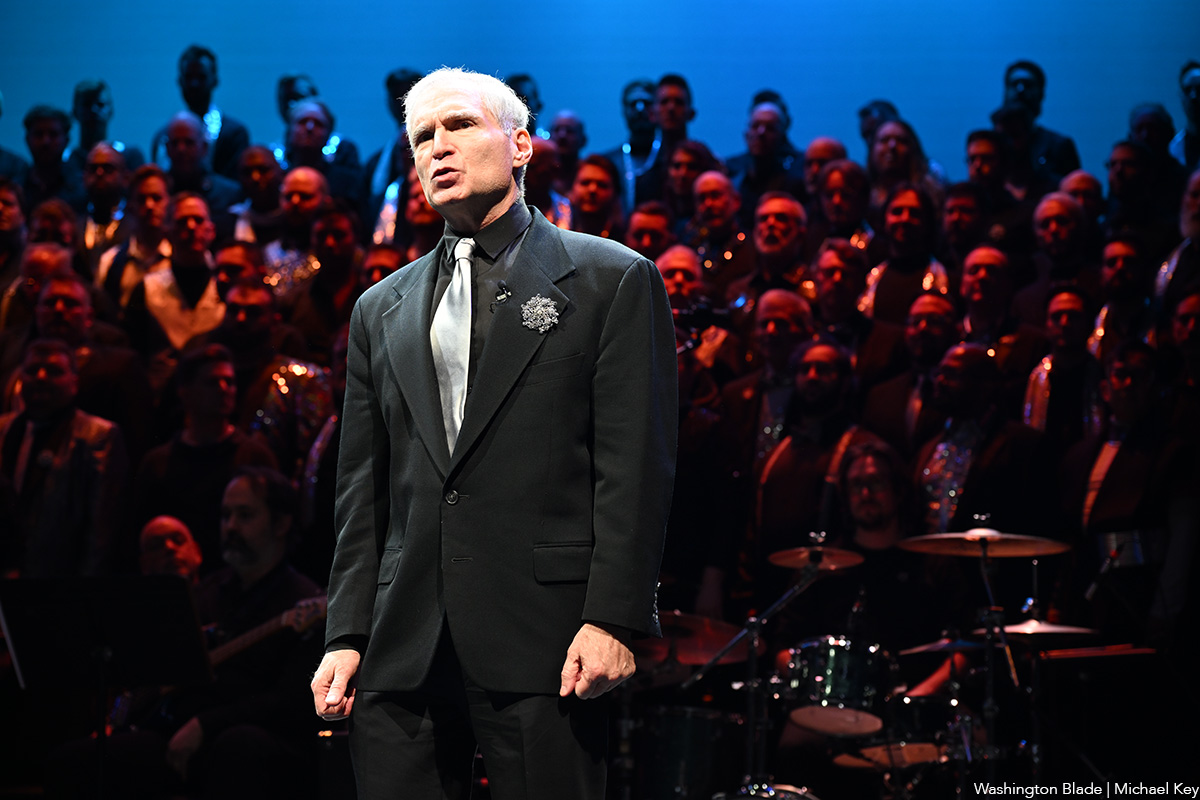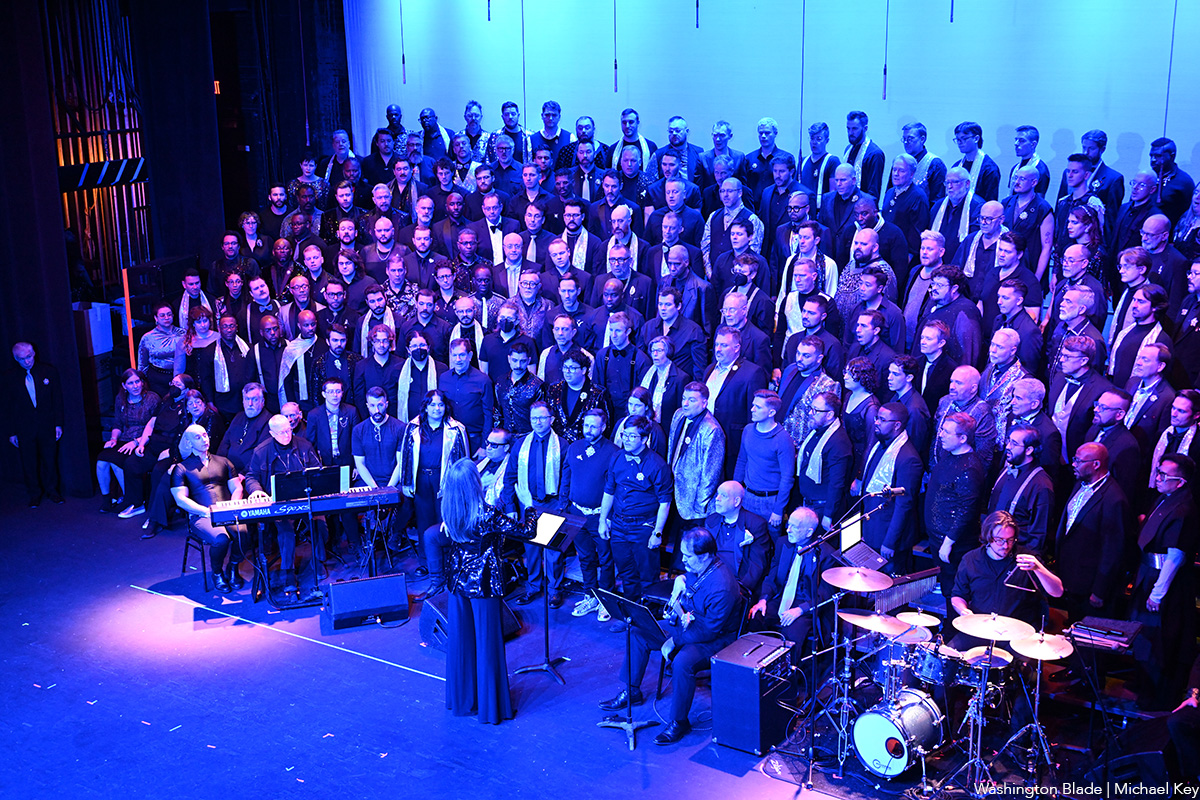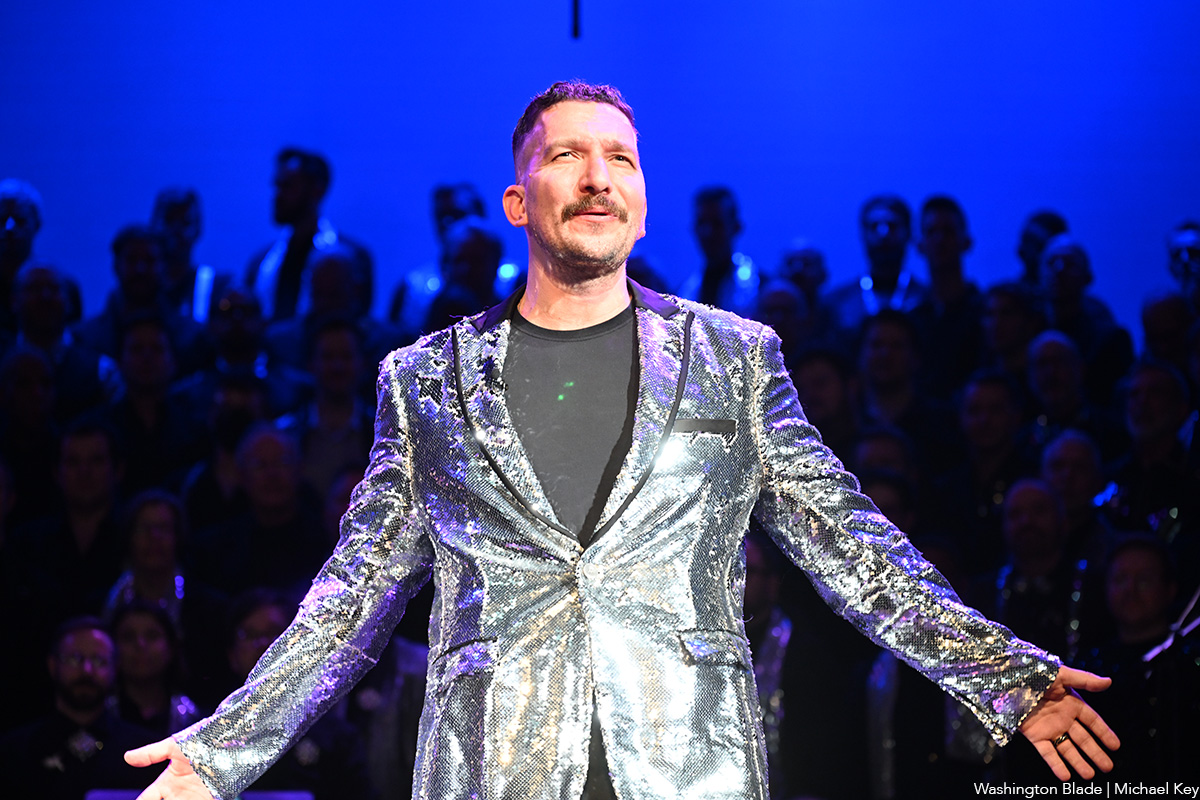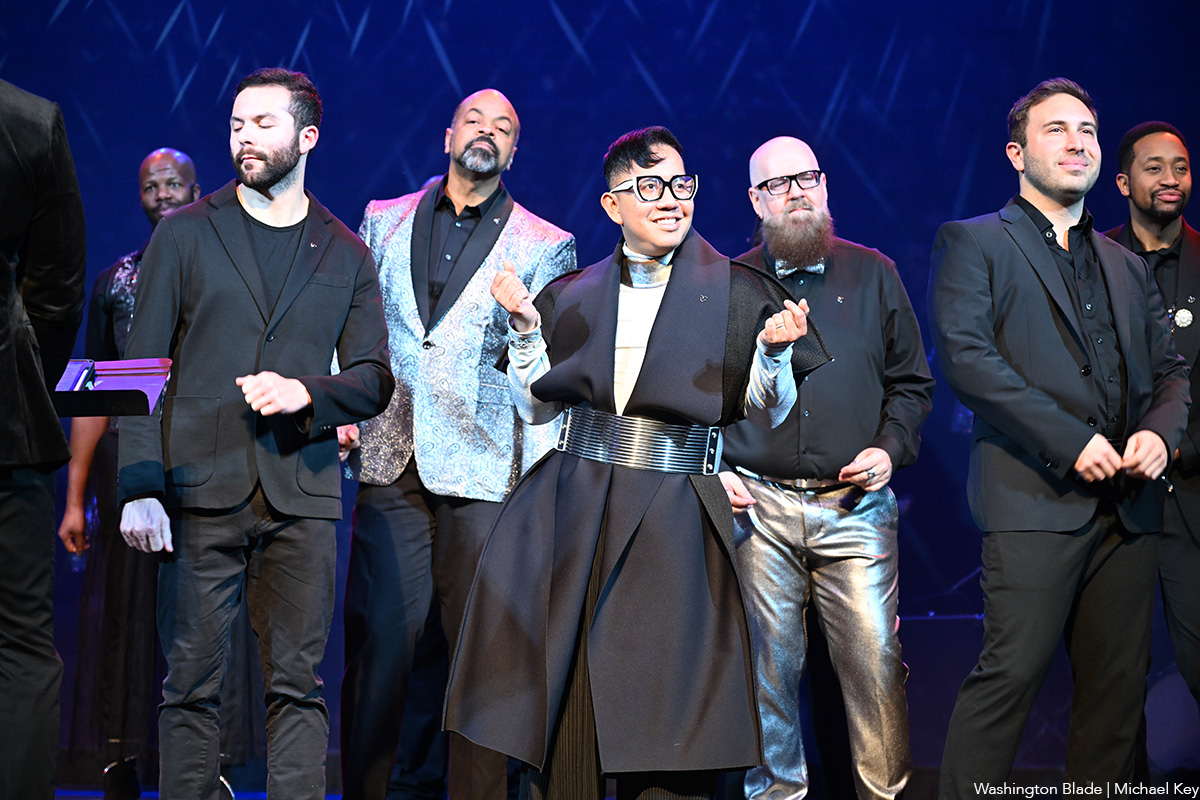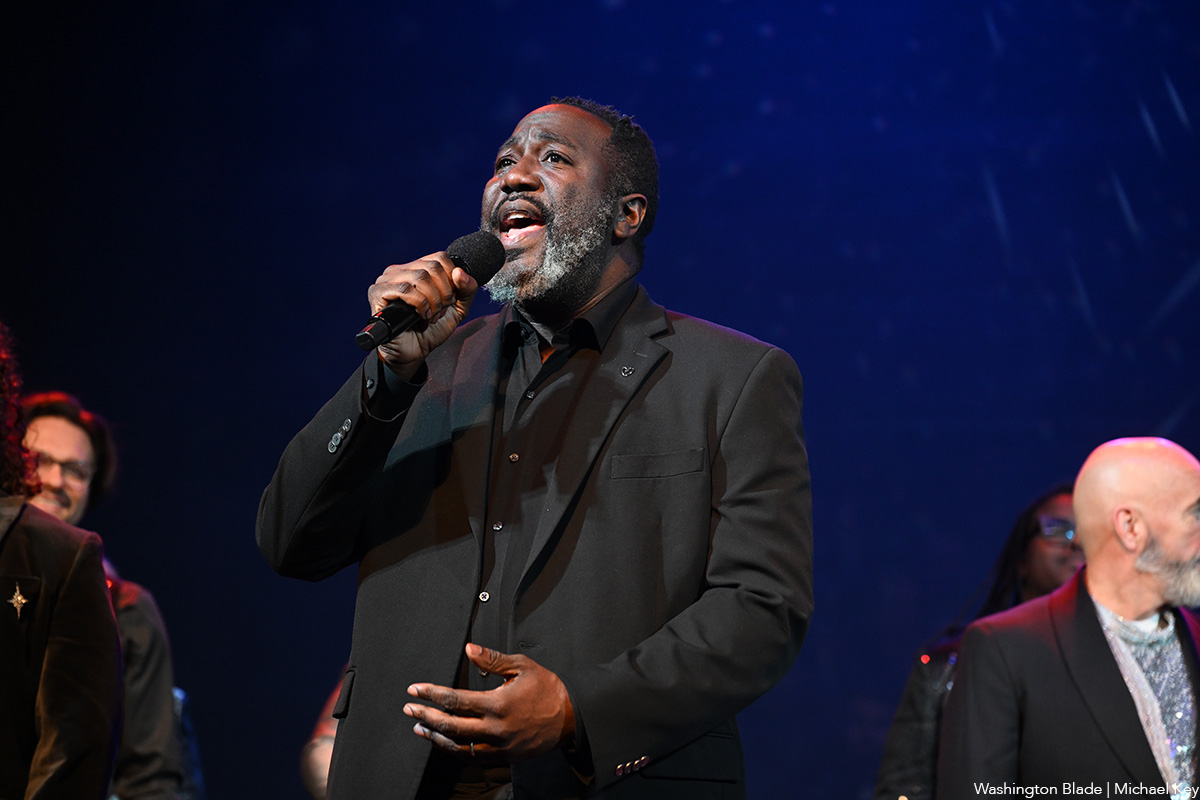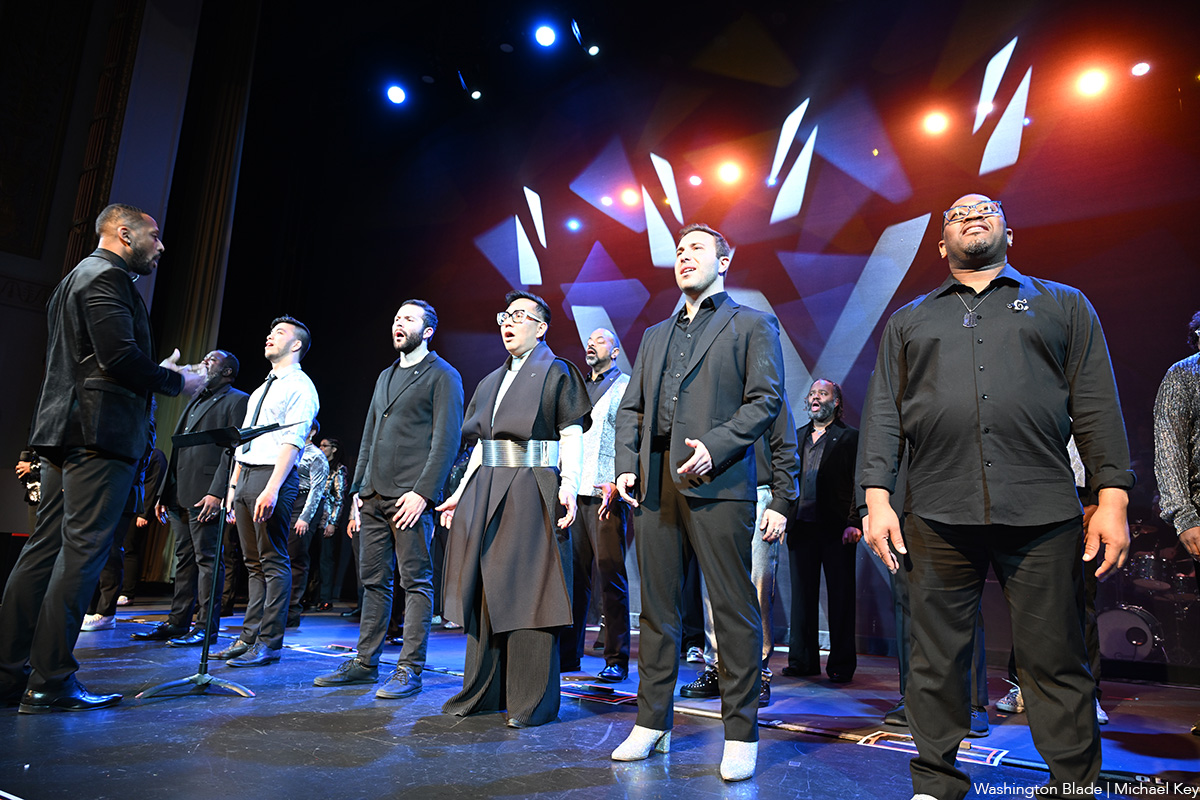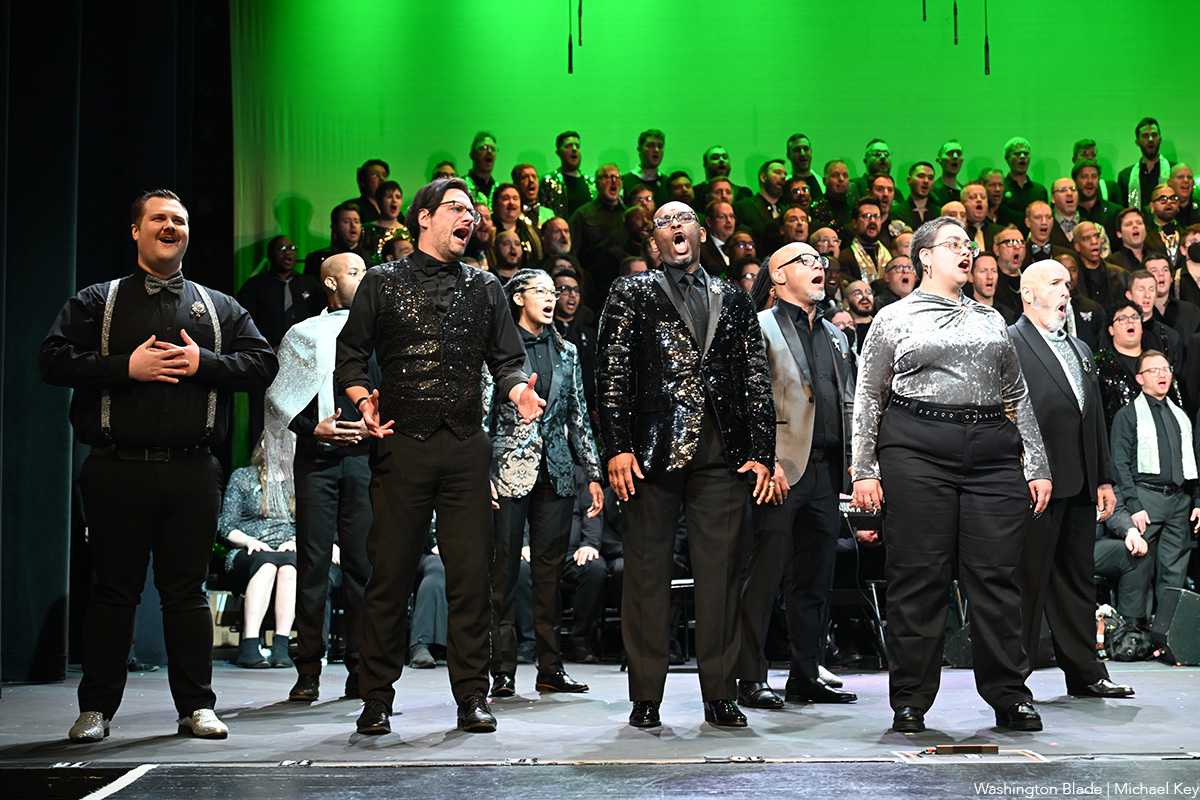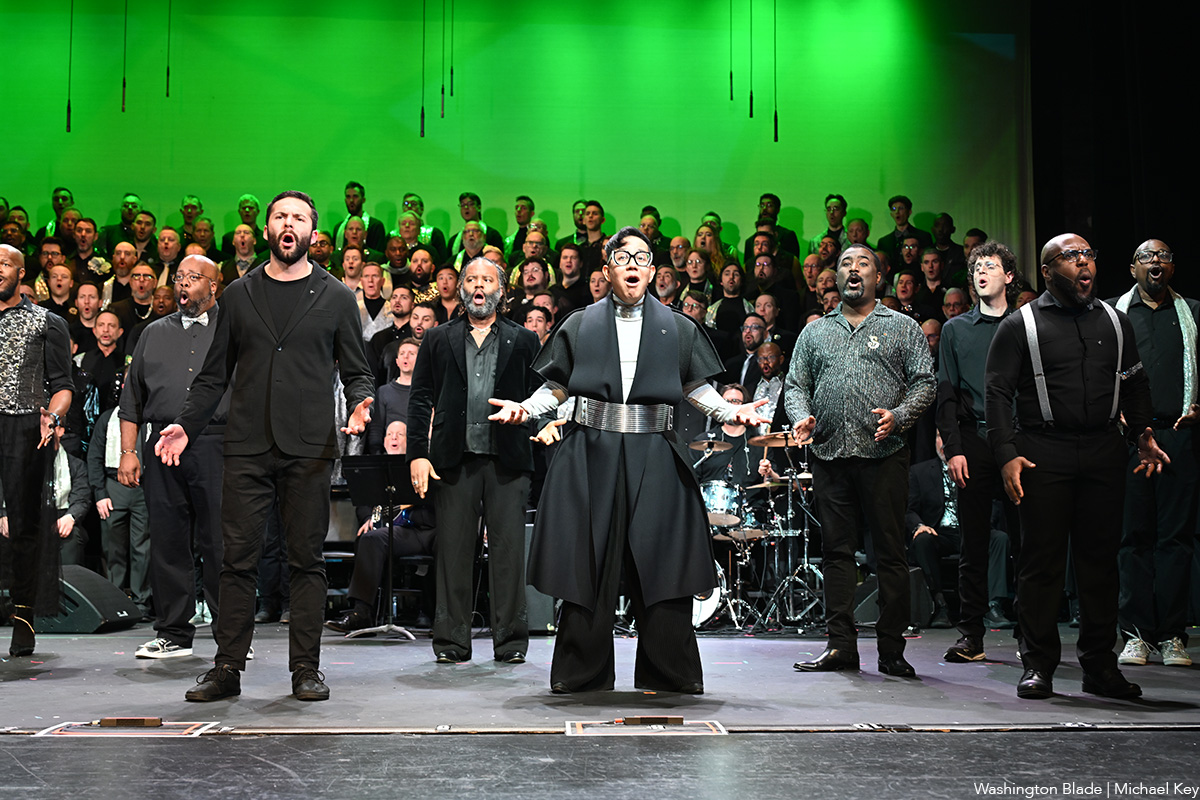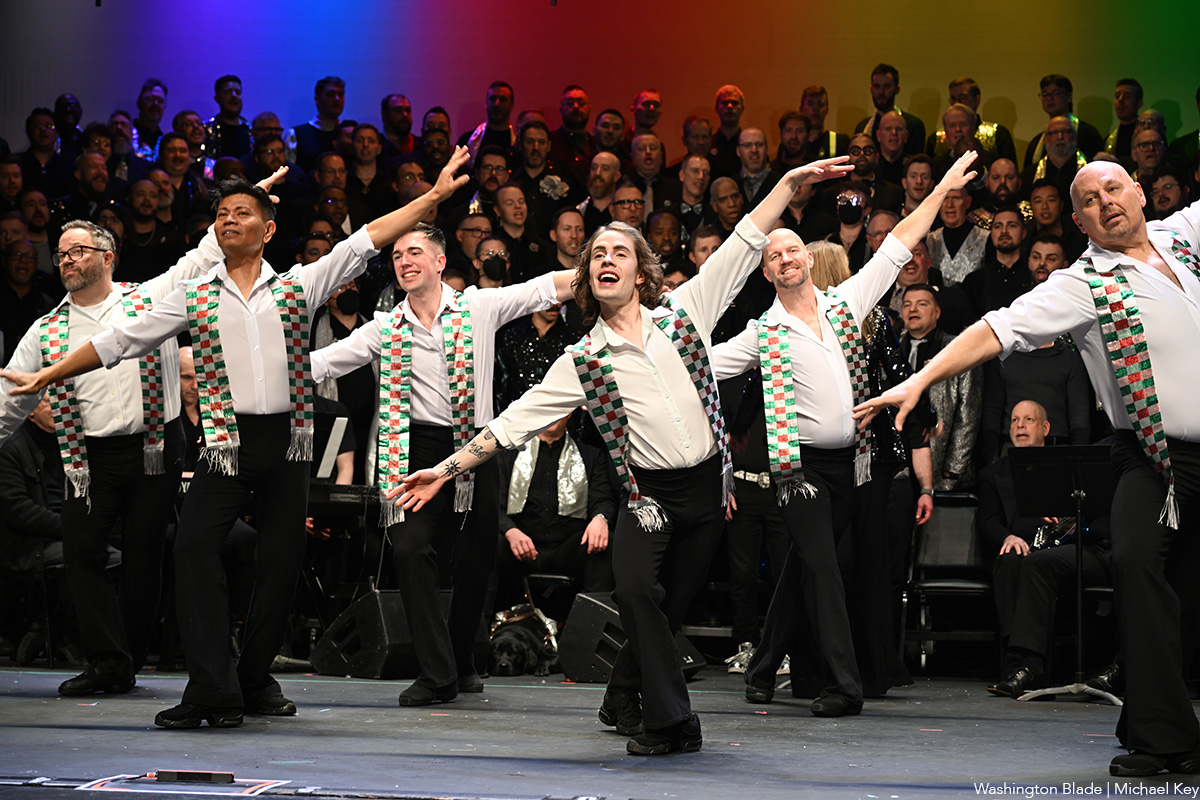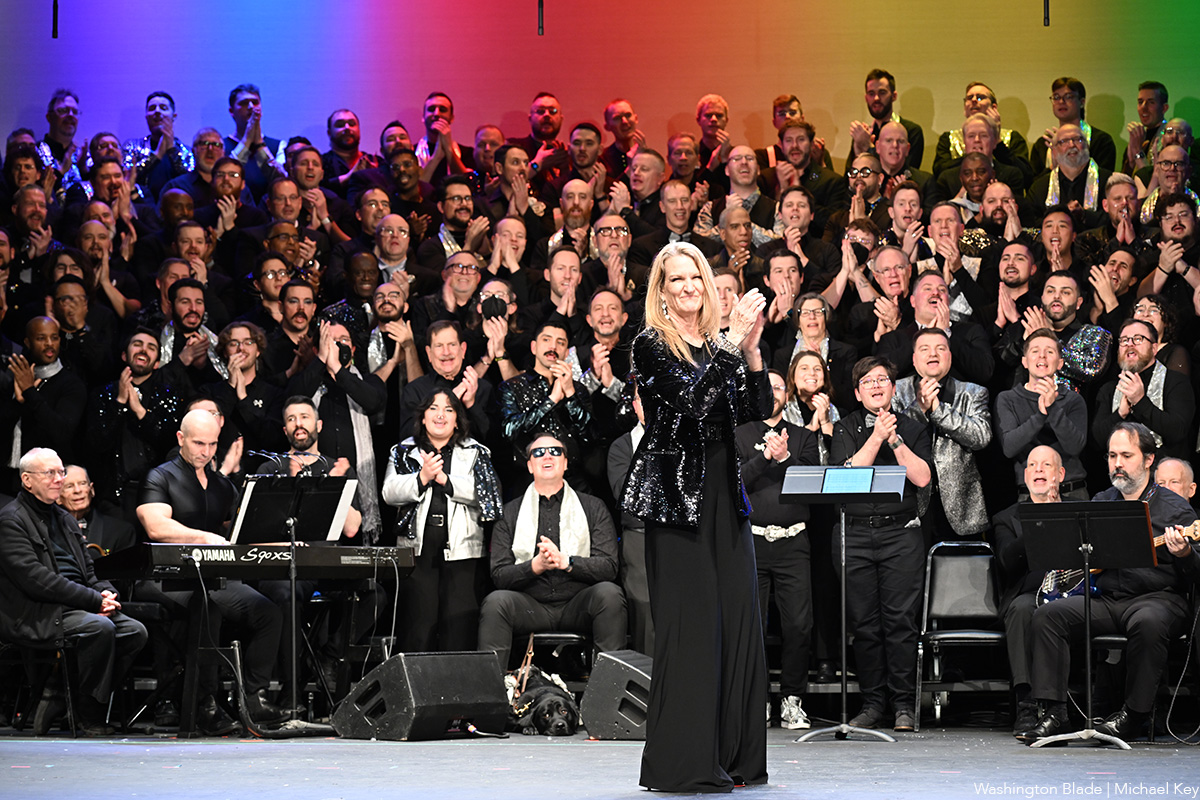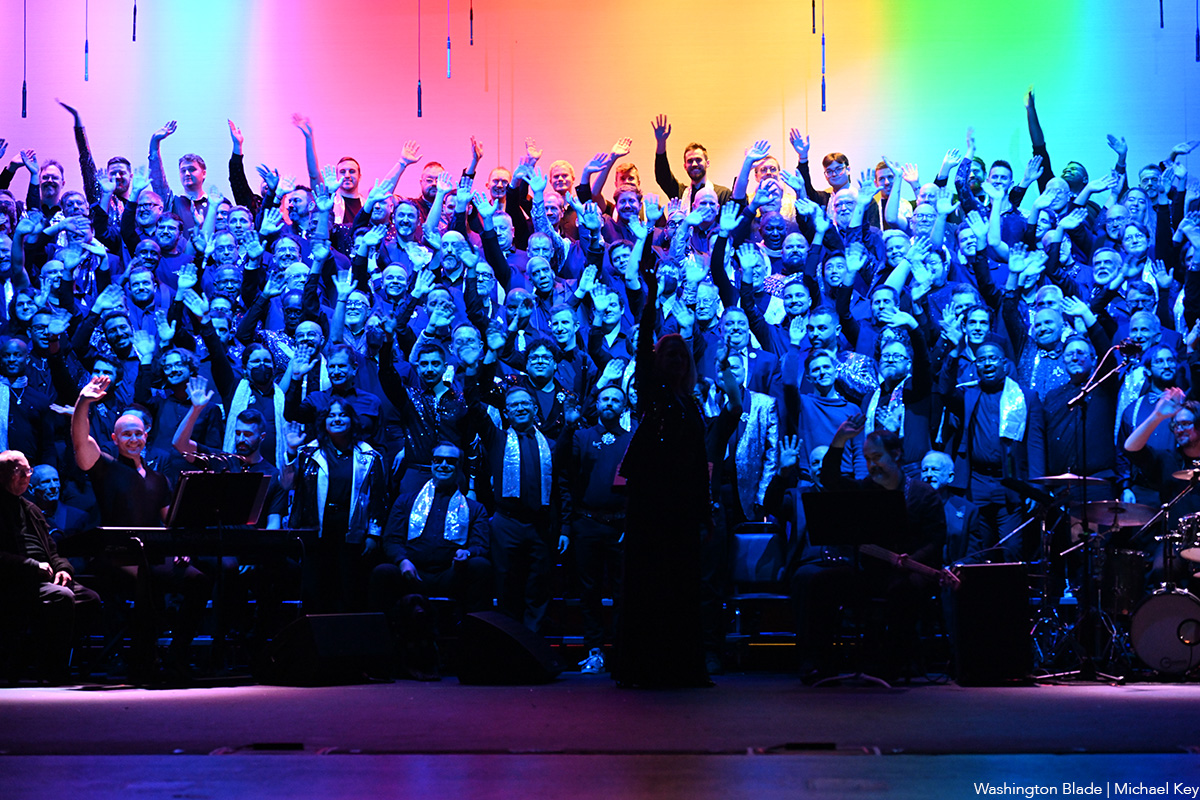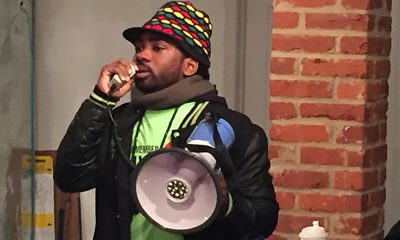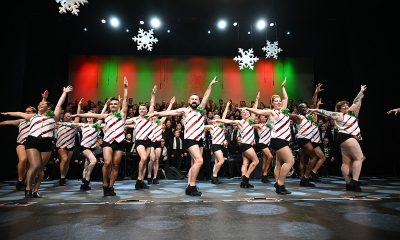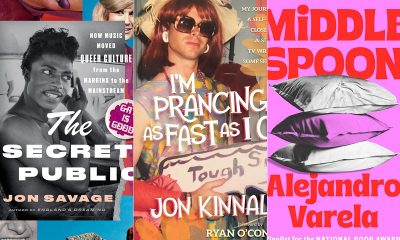Arts & Entertainment
Spotlight on Anacostia
Ward 8 arts initiative could be ‘transformational’ for neighborhood

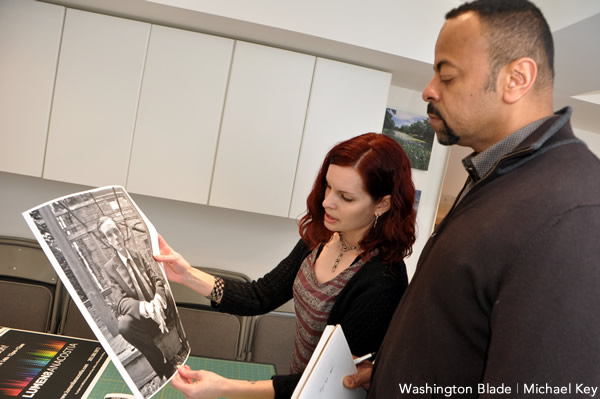
Andrea Hope and Tommie Adams look over prints he hopes to have exhibited in the Lumen8Anacostia festival in April. (Blade photo by Michael Key)
With the Smithsonian here and a host of other well-established galleries hosting exhibits — sometimes of national renown — it’s easy to get overlooked in the Washington art scene. But there’s a flourishing art community east of the Anacostia River, a handful of galleries and, come April, a bounty of opportunities for everyone to see them both in the established art houses there and in a bevy of abandoned buildings and warehouses.
Anacostia, just one of the Ward 8 D.C. Southeast neighborhoods east of the River, is changing. On April 14, residents there will launch Lumen8Anacostia, a three-month arts initiative that’s using a $250,000 grant the D.C. Office of Planning received from ArtPlace (a collaboration of nine of the country’s top foundations, eight federal agencies and six large banks that supports “creative placemaking” with grants and more) to be administered to four D.C. neighborhoods (the others are Brookland, Deanwood and the central 14th Street area N.W.) to create temporary art and culture spaces in “emerging” neighborhoods where vacant and/or underutilized storefronts and empty lots will be transformed into art knolls. Arch Development Corporation, which has been working since 1991 to revitalize historic Anacostia with several initiatives and economic development plans, is implementing Lumen8.
Though not an LGBT-specific initiative, one of the organizers, Jeffrey Herrell, is gay and his partner, Tommie Adams, is hoping to have his photography exhibited in one of the spaces. They moved to Anacostia in 2005, delighted at the amount of house and yard they could get for a fraction of the price they would have paid in Washington’s glitzier neighborhoods. Herrell says they love the neighborhood and are delighted to see its cultural side being tapped.
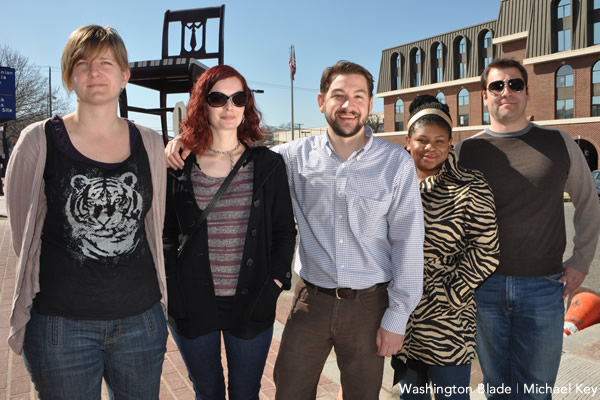
Lumen8 organizers from left are Beth Ferraro, Andrea Hope, Jeffrey Herrell, Nikki Peele and Phil Hutinet. (Blade photo by Michael Key)
“I’m a big ambassador for Anacostia,” Herrell says. “I’m always trying to get my friends to move here and I’ve succeeded a few times. I have great neighbors here. Yes, there have been some ups and downs … but I think [the neighborhood] has been stigmatized. … The neighbors are extremely close, really tight in terms of friendships and the neighborhood kind of brings you together. I really like living here.”
Herrell says he knows two artists who live on his street and has another neighbor who’s an actor/performance artist. His next-door neighbor is also gay, there’s a lesbian couple on his block and another he knows of a couple blocks over. He and Adams say gays in Dupont and Logan would be surprised to discover how easygoing most straight Anacostia residents are with their LGBT neighbors.
“People here really don’t care,” Adams says. “Sometimes the kids will say something at first, but people here don’t really care if there are differences. I guess they have worse issues to deal with.”
Anacostia does, of course, have its problems. About 94 percent black (Ward 7 is 96 percent), Ward 8 residents are plagued with the city’s highest unemployment rate — 35 percent according to the latest figures available from NeighborhoodInfo D.C., a partnership between the Urban Institute and the Washington D.C. Local Initiatives Support Corporation — and 20 violent crimes per 1,000 residents in 2010. Both, sadly, are the highest rates of D.C.’s eight wards (Ward 7’s unemployment rate is 19 percent for those 16 and older; Ward 3 has the lowest with just 3.4 percent of its 16-and-older residents out of work).
But those figures are part of the reason Lumen8 organizers say Anacostia needs some light, quite literally. In addition to the various exhibits planned, organizers plan to illuminate several Anacostia buildings for the festival. A portion of the grant money will go to Intelligent Lighting Company, which will project lights and images on several buildings there.
“We’re lighting it up literally as well as trying to shine an overall spotlight on the neighborhood,” Herrell says.
“So few people really know the location, they think Anacostia is everything east of the river,” says Nikki Peele, an Arch employee who lives in Congress Heights, another Ward 8 neighborhood. “Even lifelong D.C. residents sometimes think that. They’re not sure of the history here, what’s here to do. For too many people, the information they have is that this is a somewhat scary place, so for a project like this, especially on this scale, it has the opportunity to be a transformational moment and not just for the community but for the outside perception of it … it’s very much a family community with an almost village-like feel. … the name was chosen for a reason — to bring both light and understanding.”
Organizers are selecting artists to have their work shown now from a pool of about 20 applicants who heard about the event through neighborhood listserves and word of mouth. After the April 14 kickoff, exhibitors will have to agree to have their gallery spaces open each Saturday and then six hours on another day during the week for the rest of April, May and June. Aside from the neighborhood’s existing three galleries, space such as a former police warehouse and several vacant storefronts on Martin Luther King Avenue and Good Hope Road will be converted into temporary exhibition space. Portions of the funds from the grant will be used to convert the various spaces and to give to the artists to realize their visions for their exhibits.
Herrell says it’s a good opportunity for both D.C. residents in general and also for the Anacostia artists, most amateurs, who’ve never had their work exhibited before.
“They may not be able to afford to open their own store, but this will give them a taste of what it’s like,” he says.
“It’s a very large-scale project,” says Phil Hutinet, Arch’s chief operating officer. “It’s going to be a huge benefit to the artistic community and to the neighborhood.”
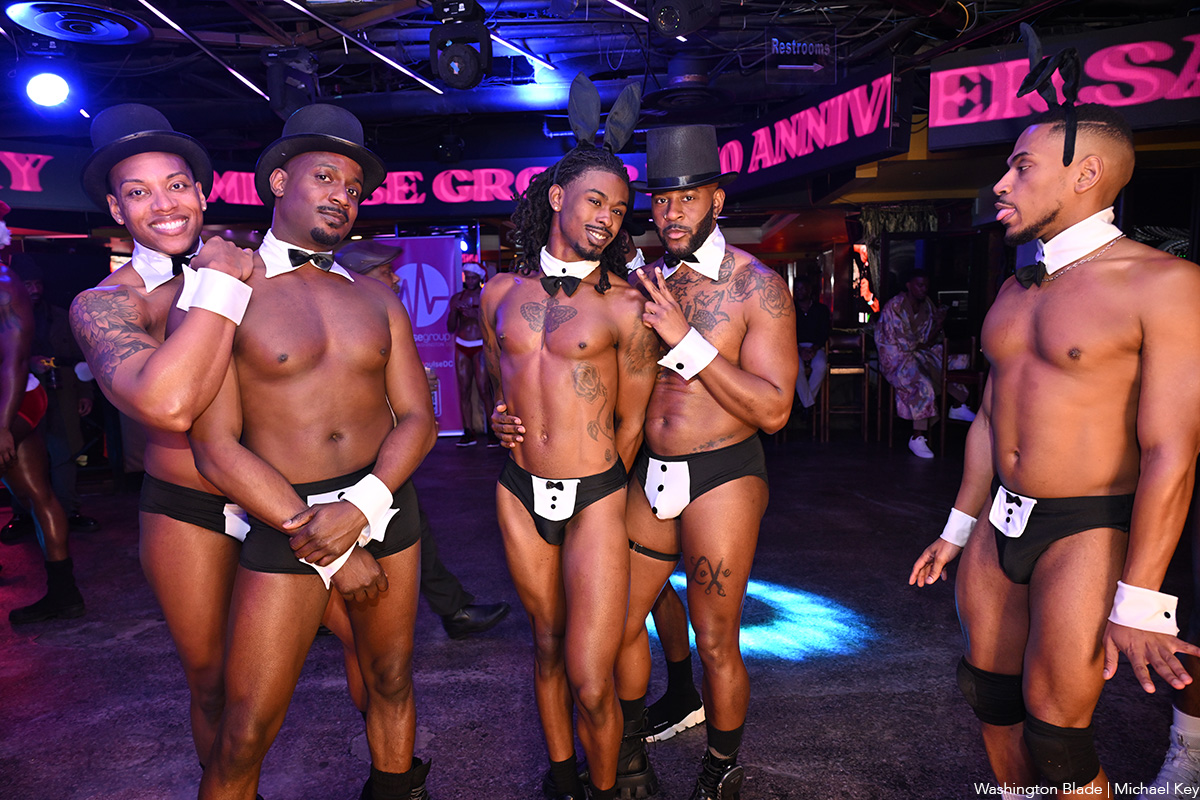
Impulse Group DC held “10’s Across the Board: A Celebration of 10 Years” at Bravo Bravo (1001 Connecticut Ave., N.W.) on Sunday, Dec. 14. Impulse Group DC is a volunteer-led 501(c)(3) and affinity group of AIDS Healthcare Foundation dedicated “to engaging, supporting, and connecting gay men” through culturally relevant health and advocacy work.
(Washington Blade photos by Michael Key)
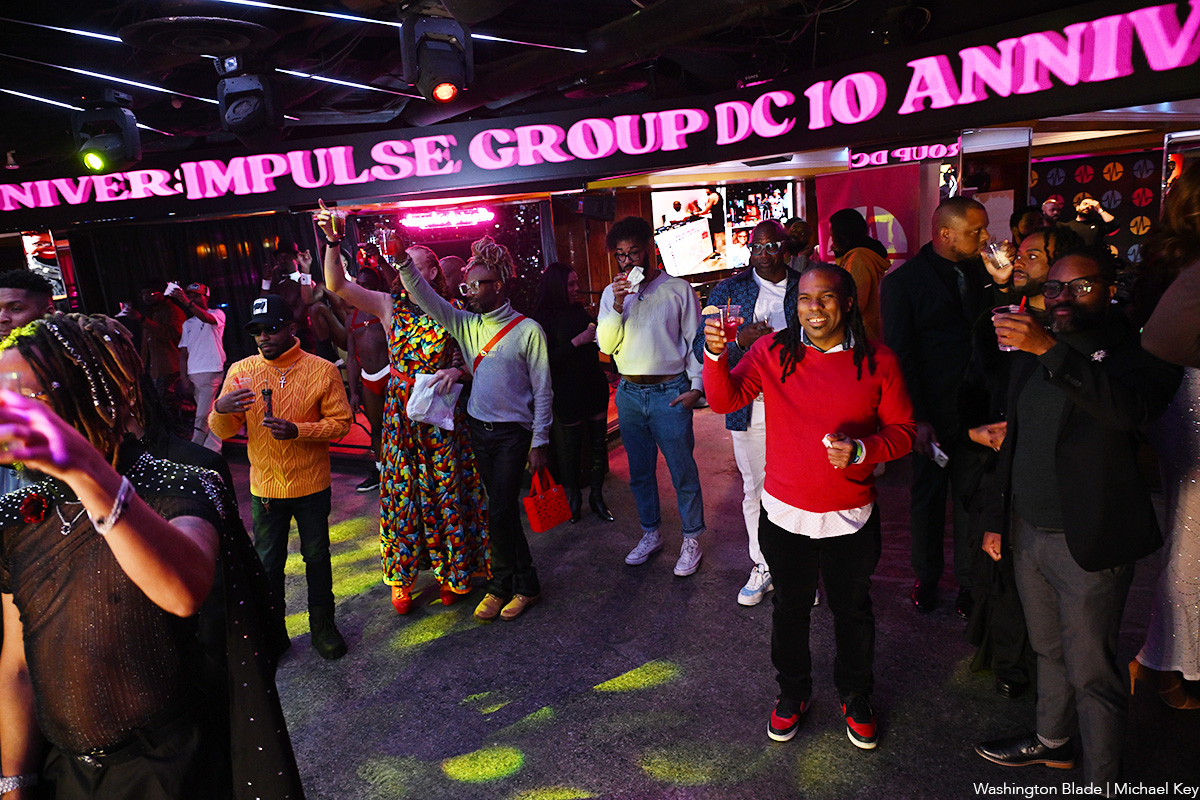
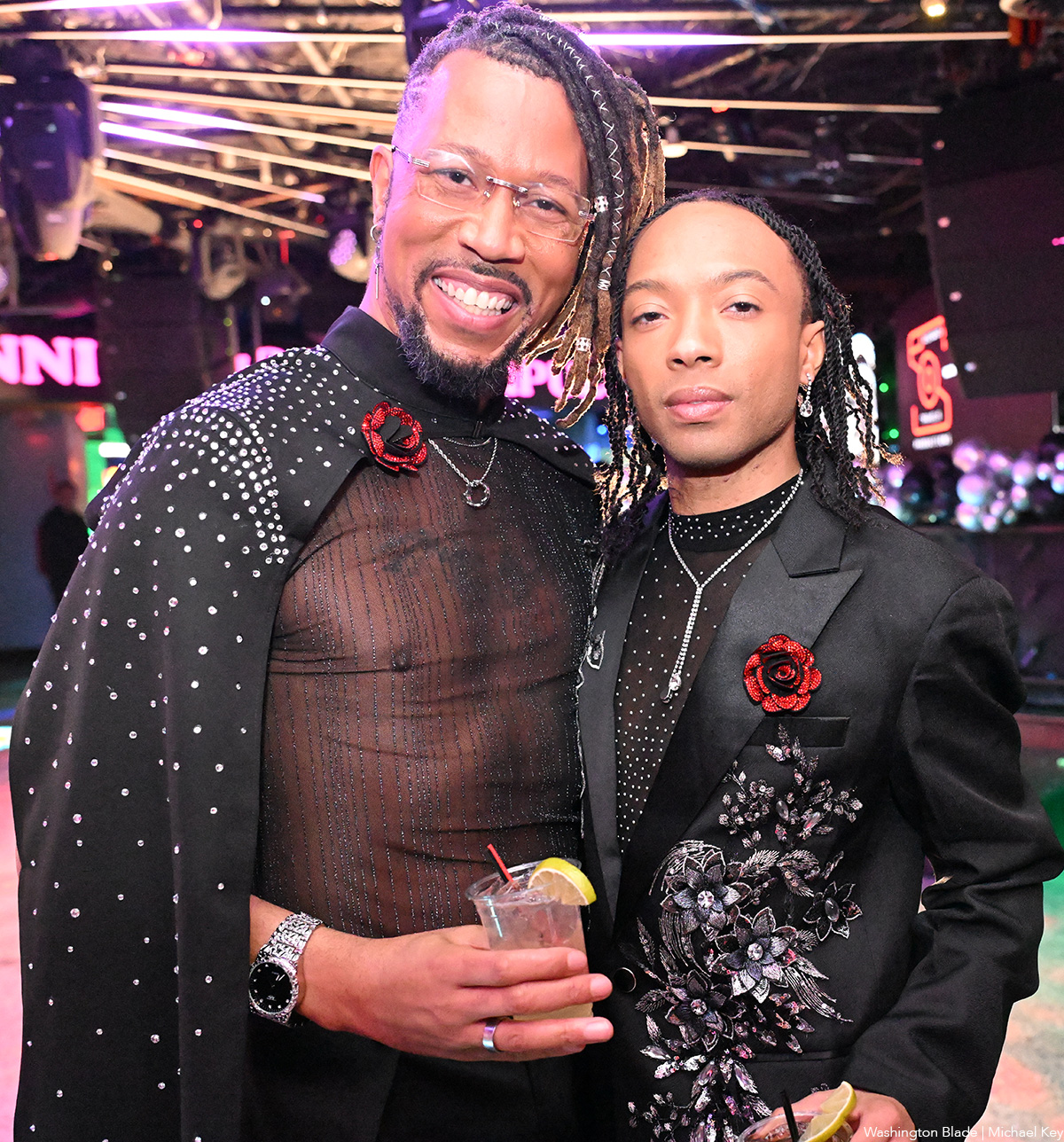
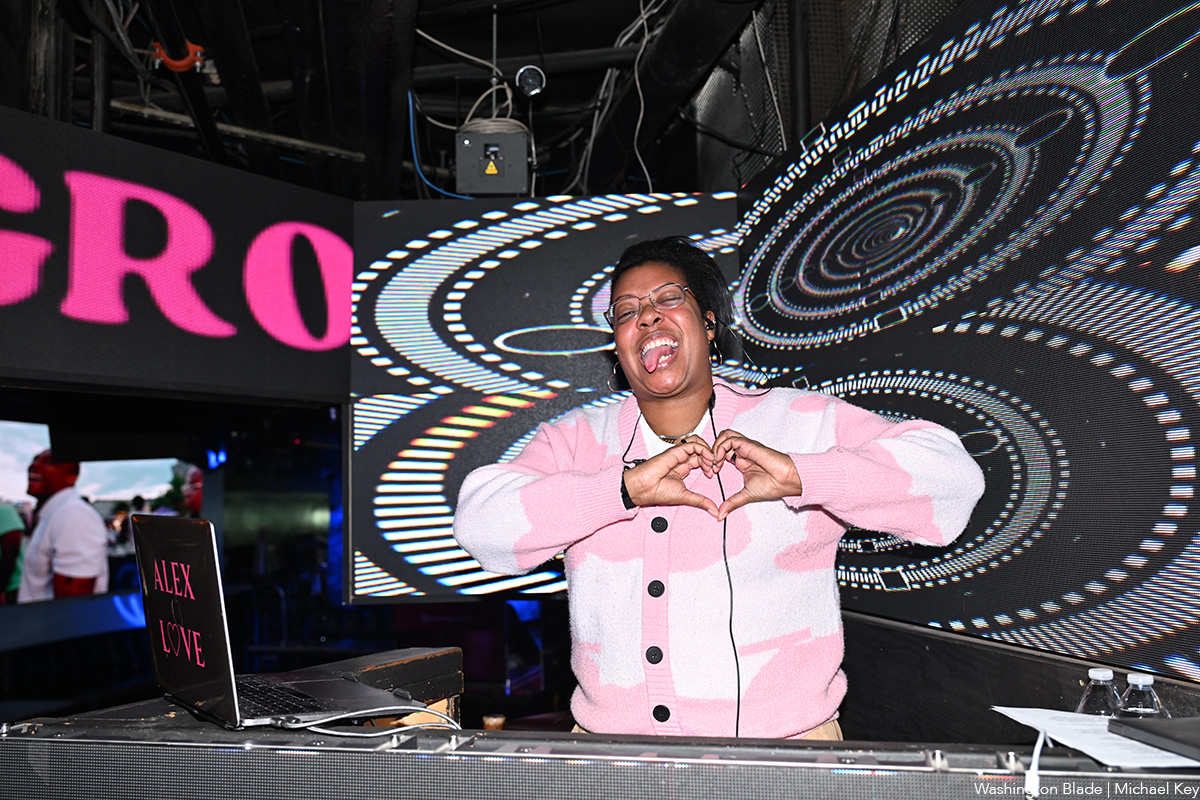
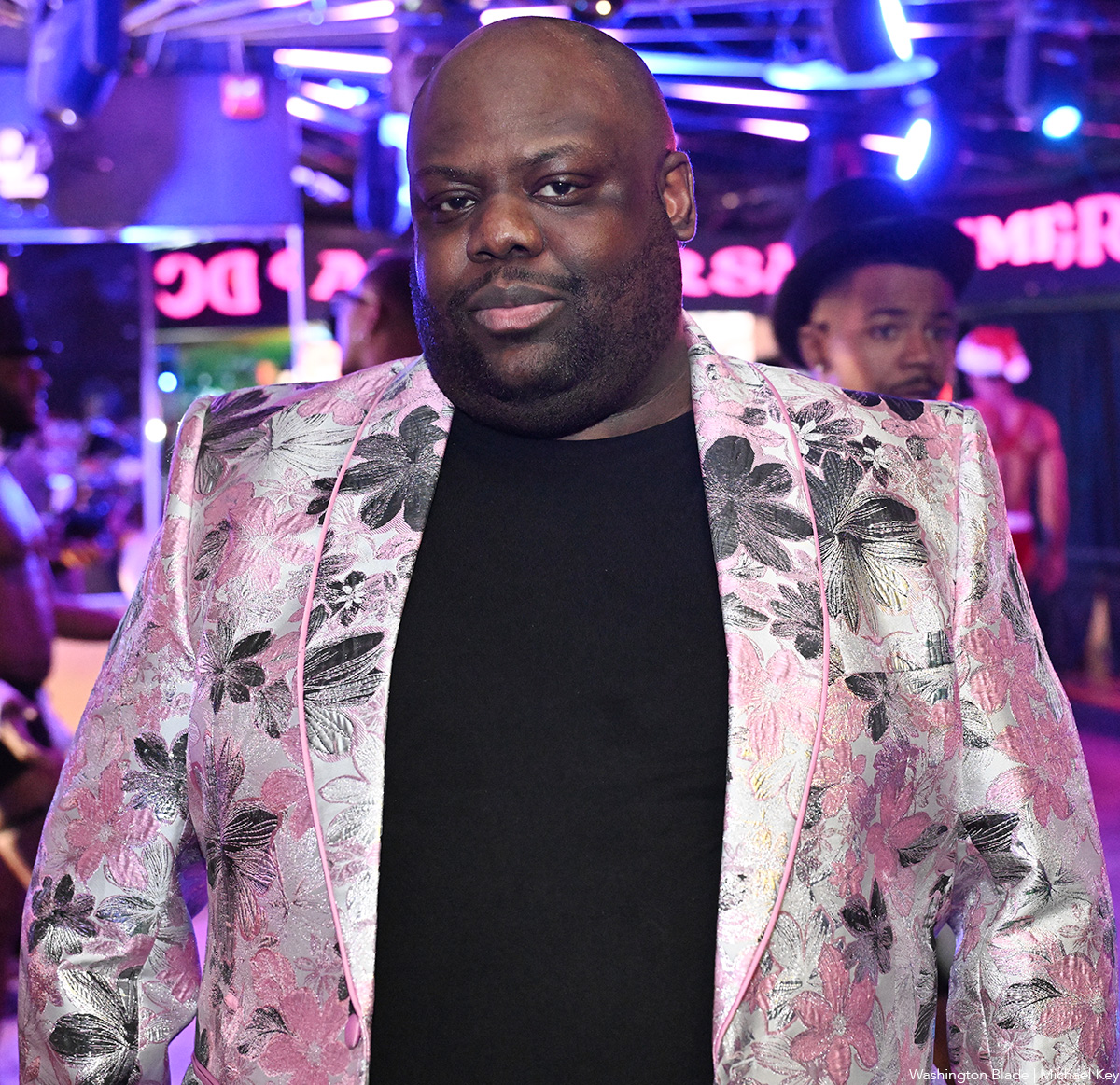
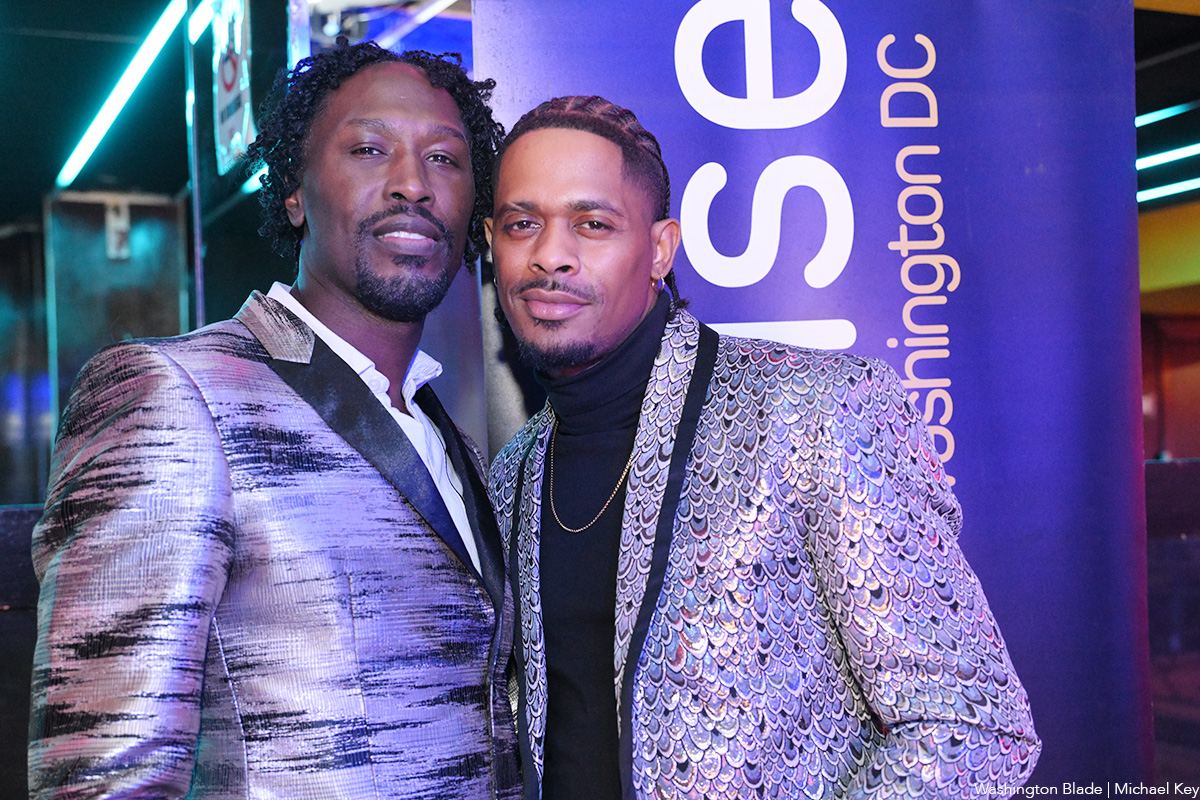
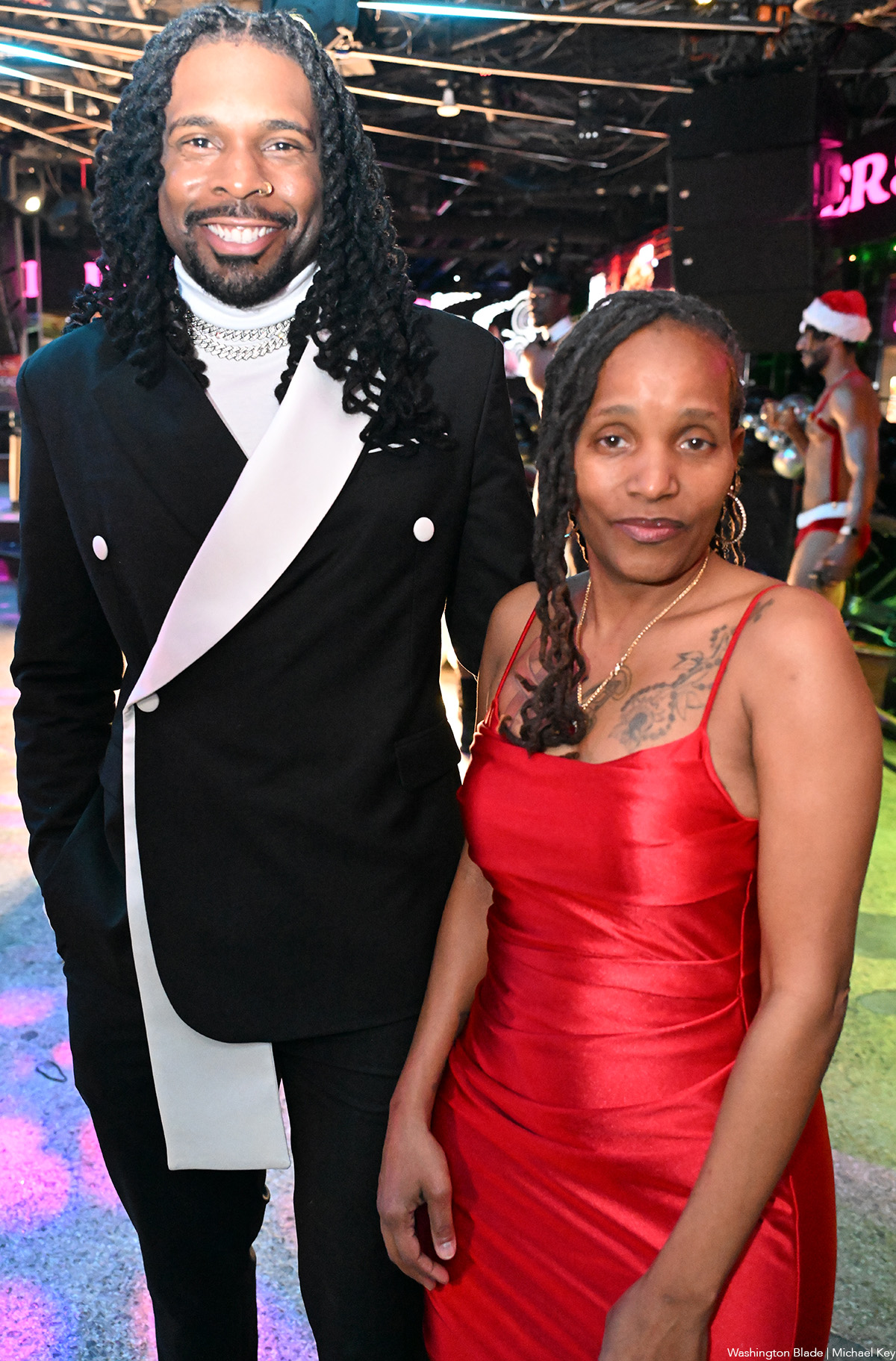
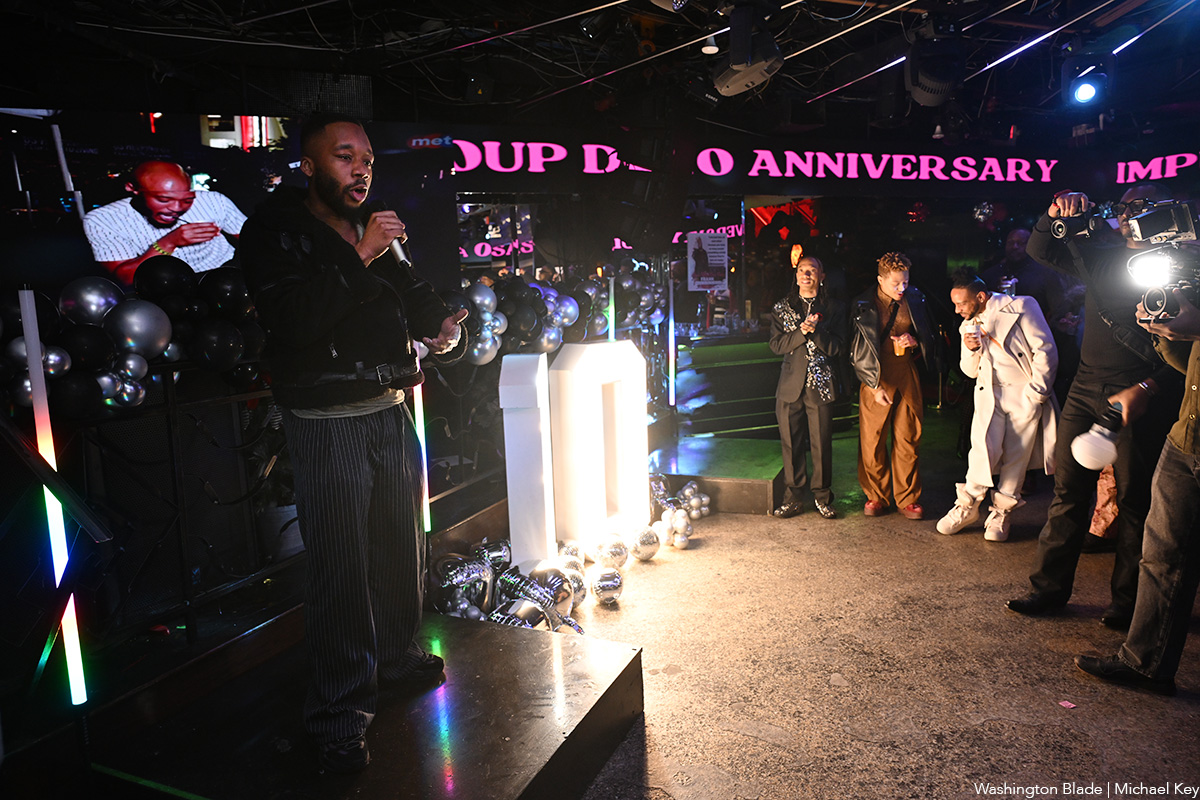
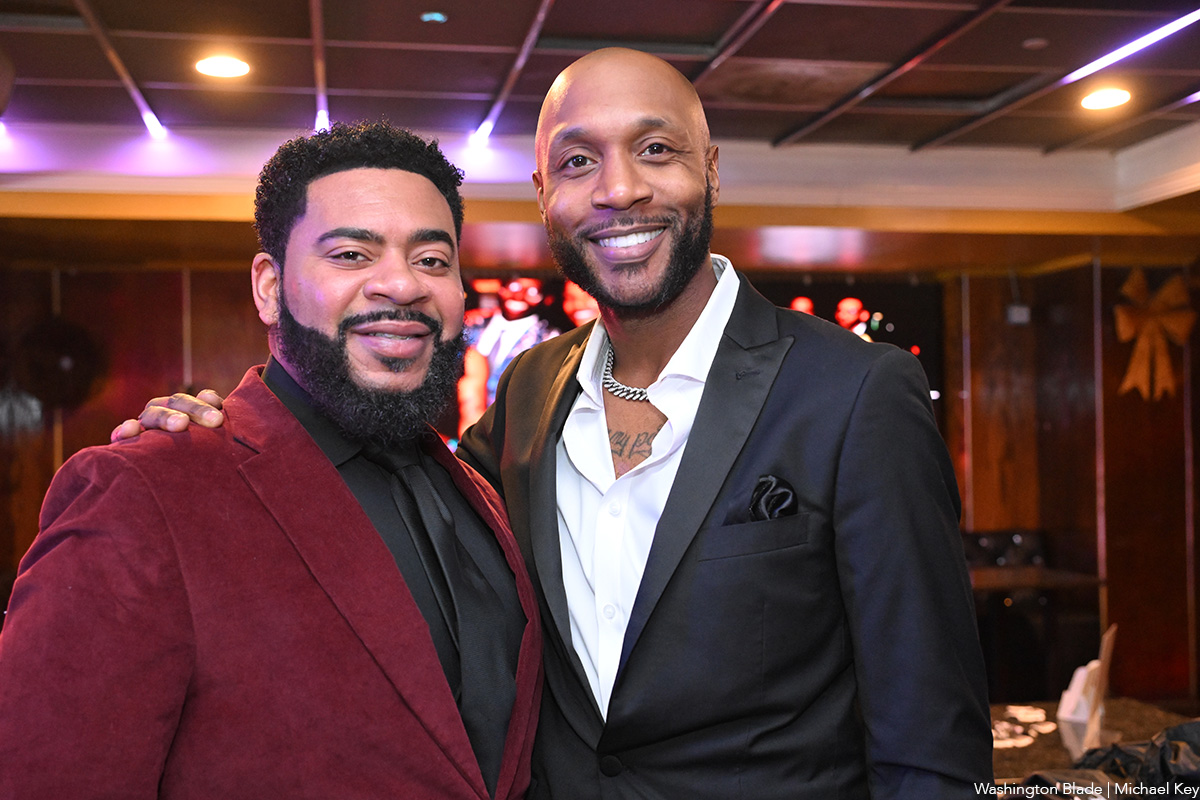
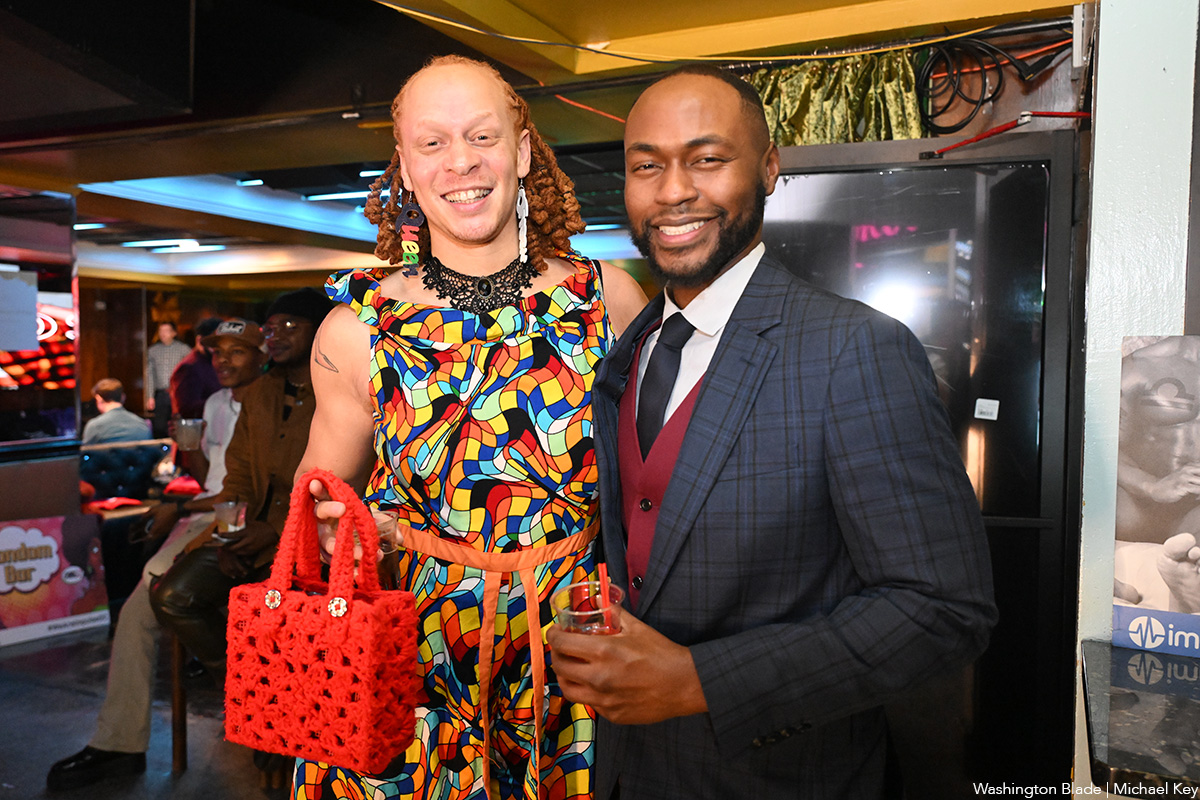
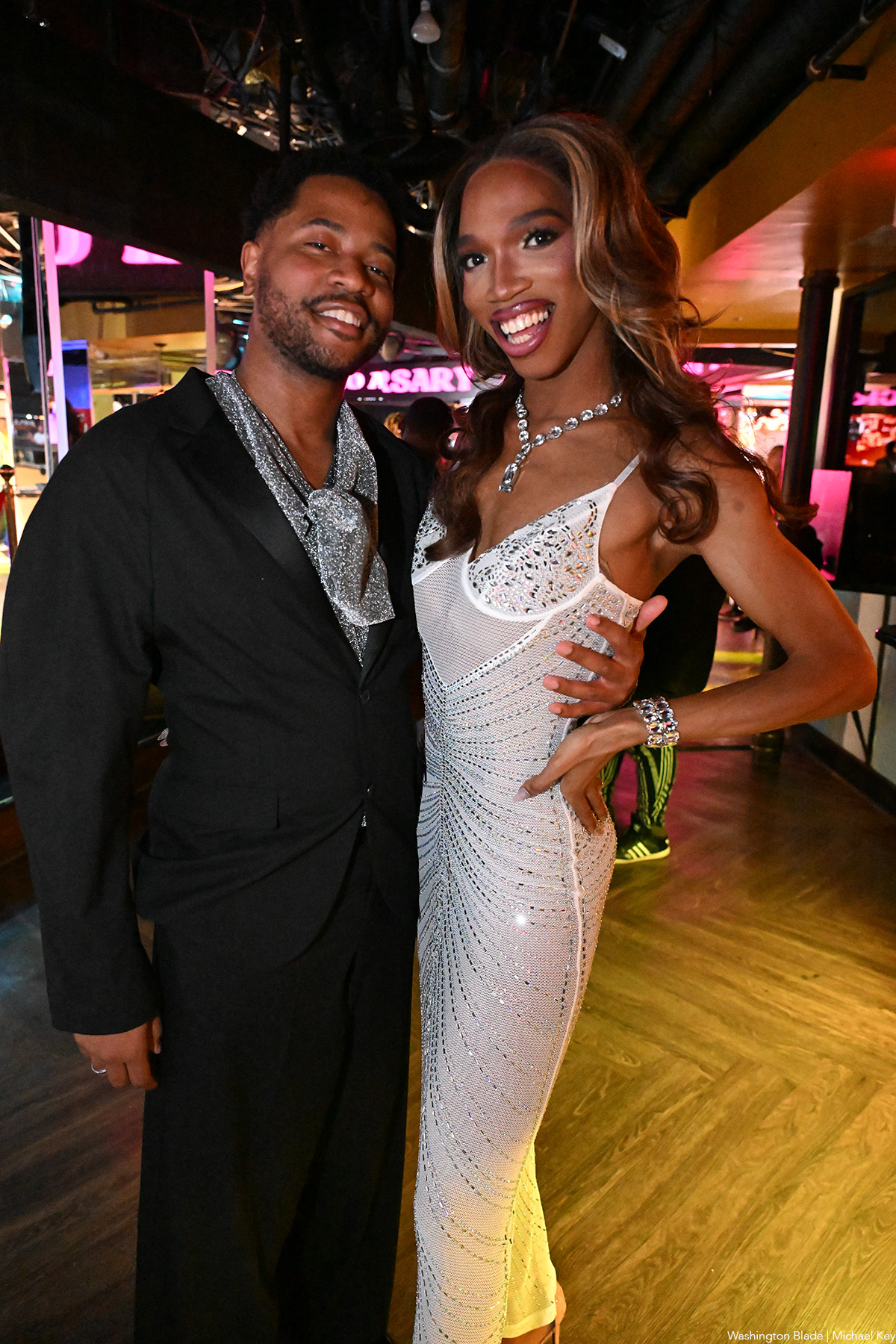
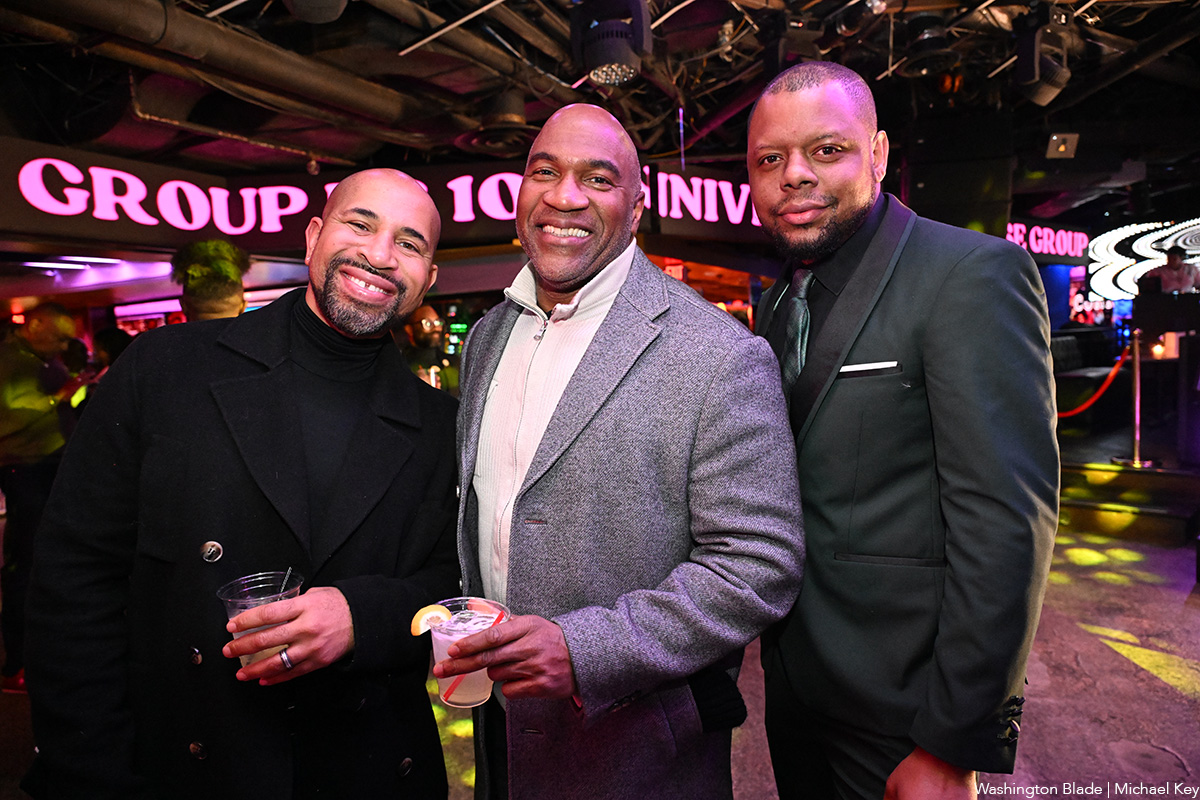
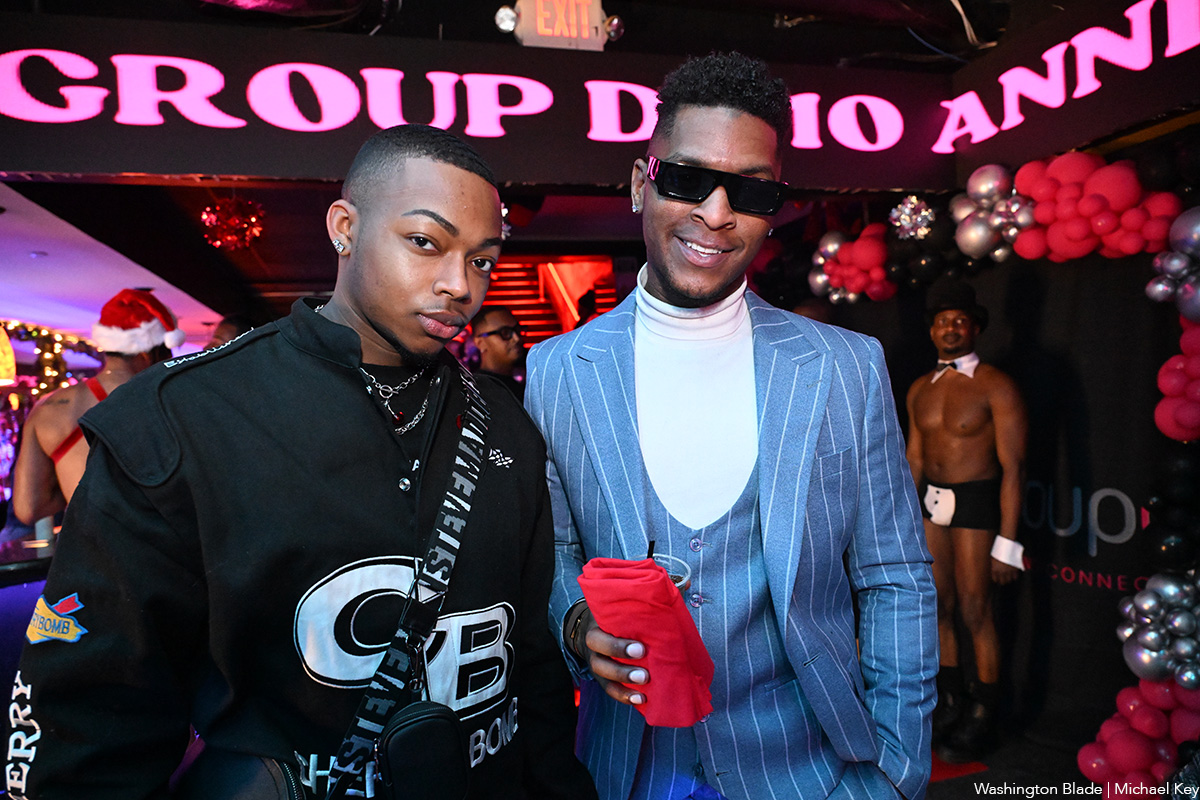
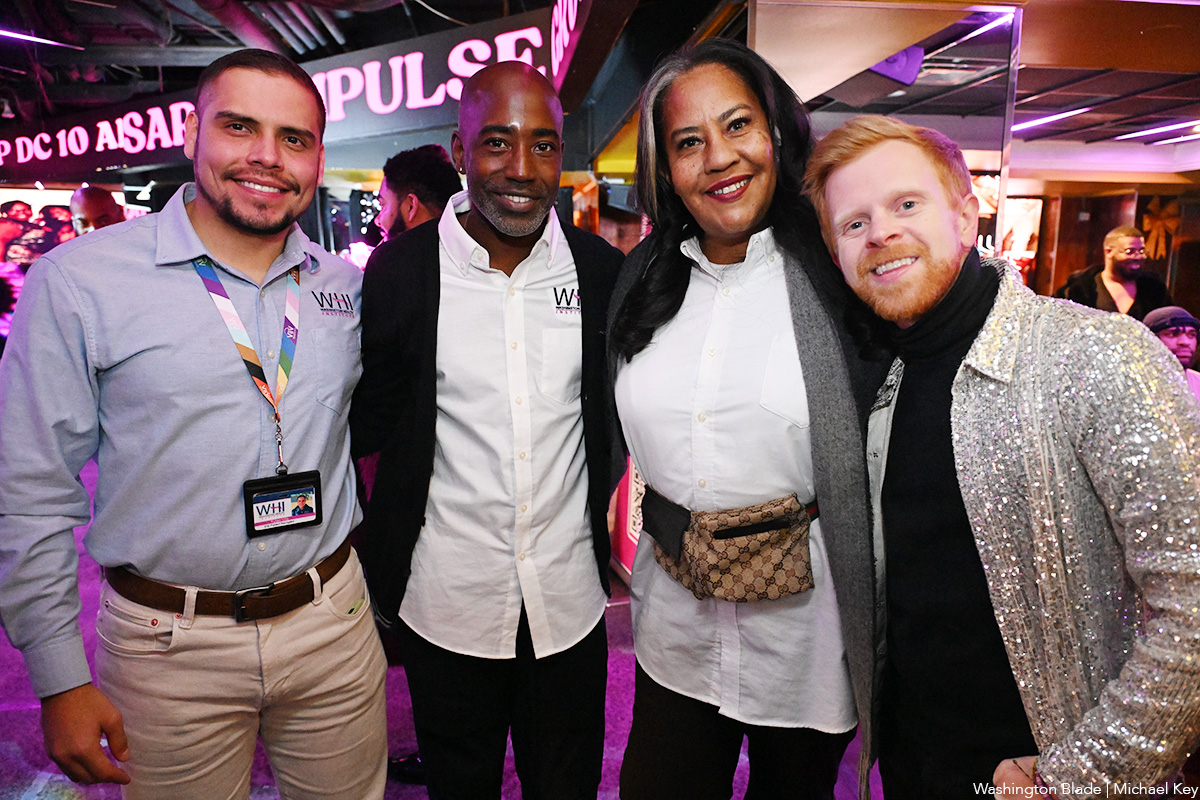

Rob Reiner, most known for directing untouchable classics like “The Princess Bride,” “Misery,” “When Harry Met Sally…,” and “Stand by Me,” died Dec. 14 alongside his wife, Michele Singer Reiner, in their Los Angeles residence. While investigations are actively underway, sources have told PEOPLE Magazine that the pair’s son, Nick Reiner, killed his parents and has been taken into custody.
Reiner was a master of every genre, from the romantic comedy to the psychological thriller to the coming-of-age buddy movie. But in addition to his renowned work that made him a household name, Reiner is also remembered as a true advocate for the LGBTQ community. In 2009, Reiner and his wife co-founded the American Foundation for Equal Rights, helping fight against California’s Prop 8 same-sex marriage ban. They were honored at the 2015 Human Rights Campaign Las Vegas Gala.
In a statement, HRC President Kelley Robinson said: “The entire HRC family is devastated by the loss of Rob and Michele Reiner. Rob is nothing short of a legend — his television shows and films are a part of our American history and will continue to bring joy to millions of people across the world. Yet for all his accomplishments in Hollywood, Rob and Michele will most be remembered for their gigantic hearts, and their fierce support for the causes they believed in — including LGBTQ+ equality. So many in our movement remember how Rob and Michele organized their peers, brought strategists and lawyers together, and helped power landmark Supreme Court decisions that made marriage equality the law of the land — and they remained committed to the cause until their final days. The world is a darker place this morning without Rob and Michele — may they rest in power.”
Reiner’s frequent collaborators have also spoken out as the industry is in mourning, including figures like Ron Howard and John Cusack.
A joint statement from Jamie Lee Curtis and Christopher Guest (who starred in Reiner’s “This is Spinal Tap”) reads: “Christopher and I are numb and sad and shocked about the violent, tragic deaths of our dear friends Rob and Michele Singer Reiner and our ONLY focus and care right now is for their children and immediate families and we will offer all support possible to help them. There will be plenty of time later to discuss the creative lives we shared and the great political and social impact they both had on the entertainment industry, early childhood development, the fight for gay marriage, and their global care for a world in crisis. We have lost great friends. Please give us time to grieve.”
While attending the 2019 HRC Los Angeles Dinner, Reiner spoke out about the need for equality: “We have to move past singling out transgender, LGBTQ, black, white, Jewish, Muslim, Latino. We have to get way past that and start accepting the idea that we’re all human beings. We’re all human beings, we all share the same planet, and we should all have the same rights, period. It’s no more complicated than that.”
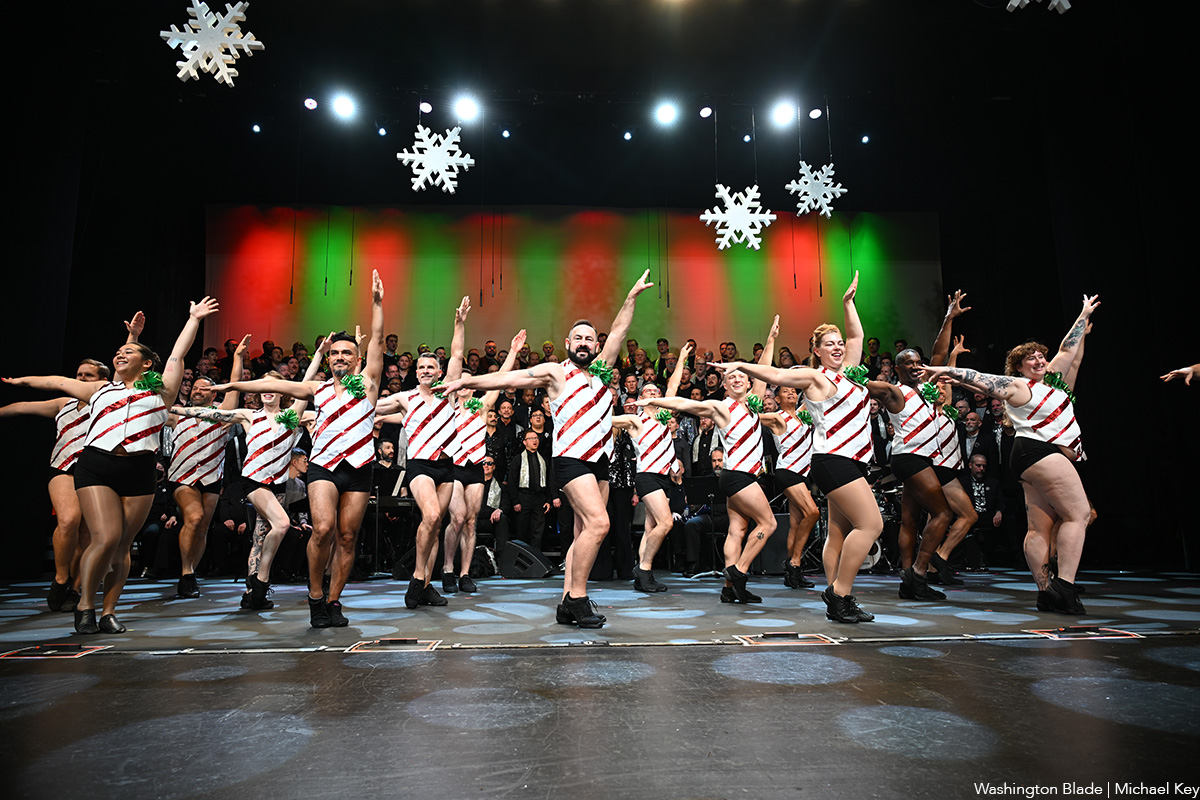
The Gay Men’s Chorus of Washington perform “The Holiday Show” at Lincoln Theatre (1215 U St., N.W.). Visit gmcw.org for tickets and showtimes.
(Washington Blade photos by Michael Key)
